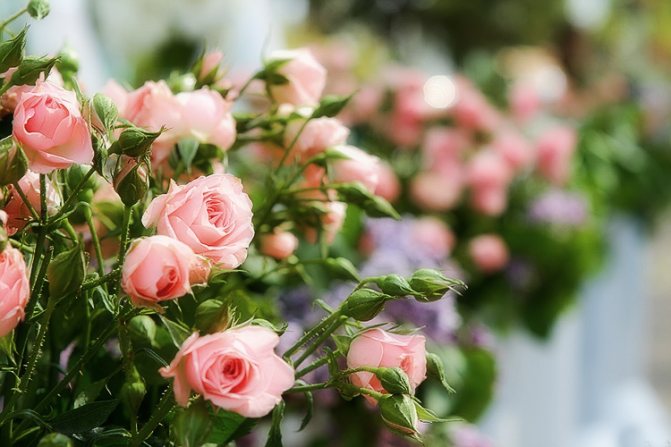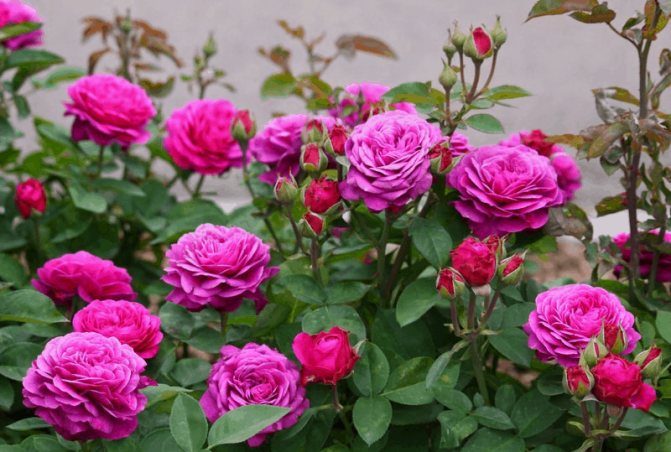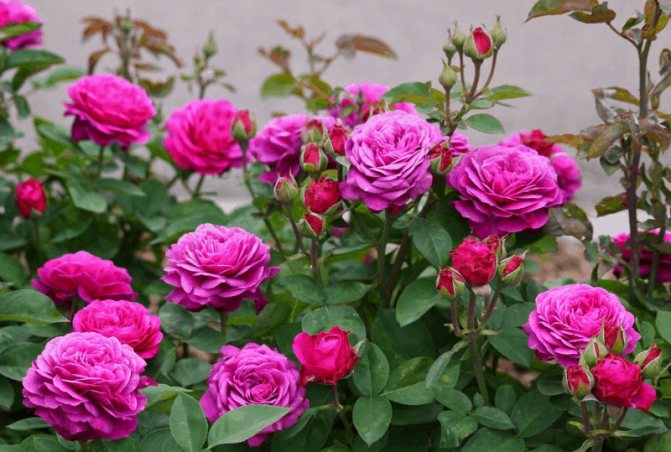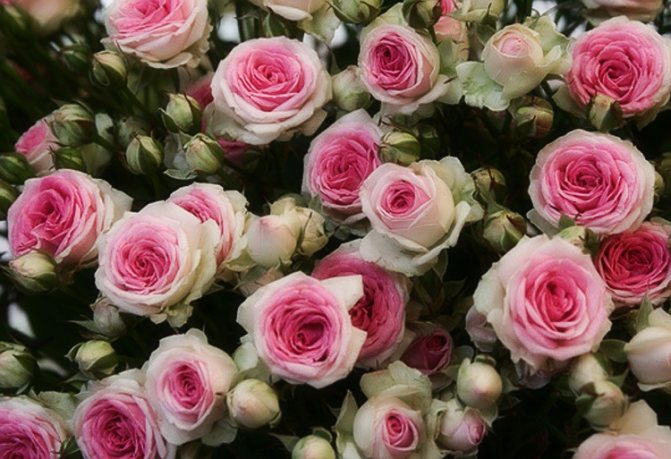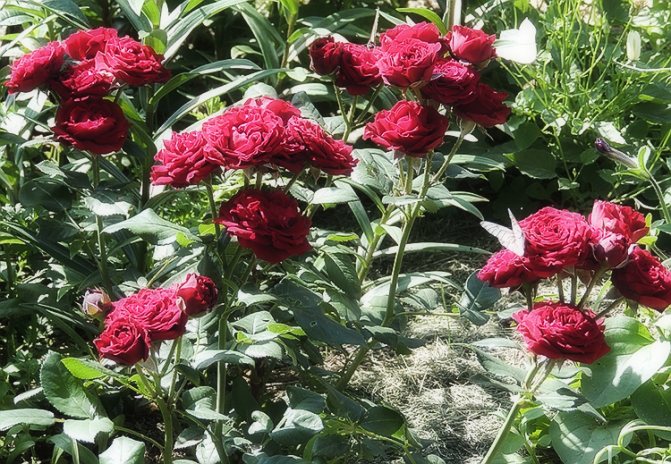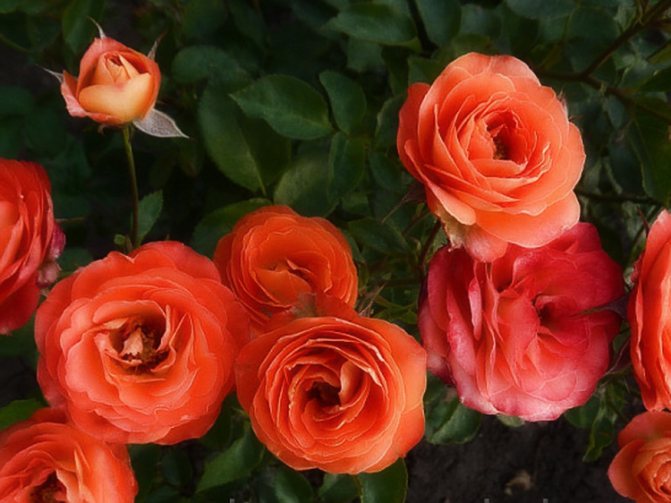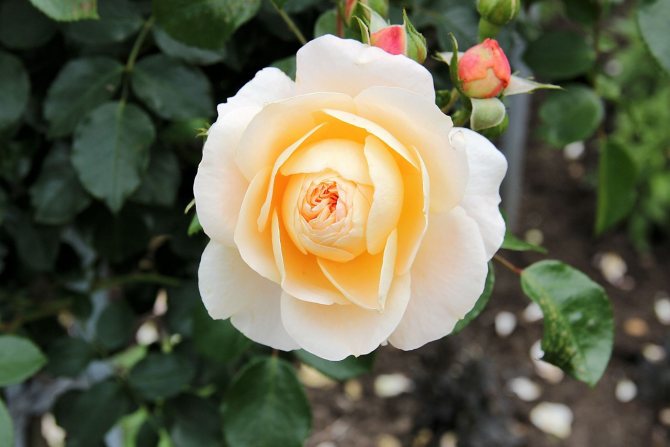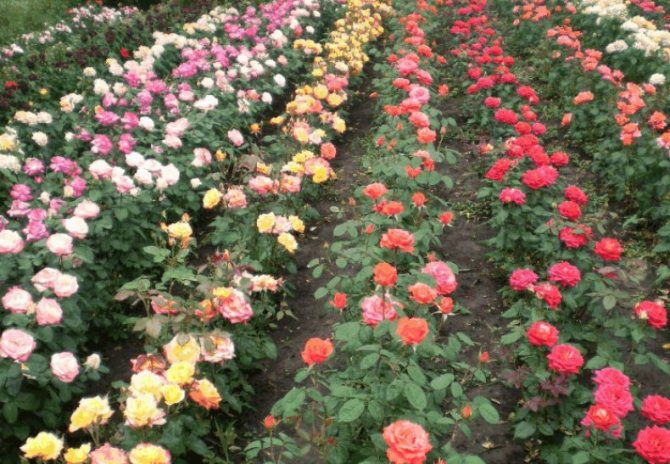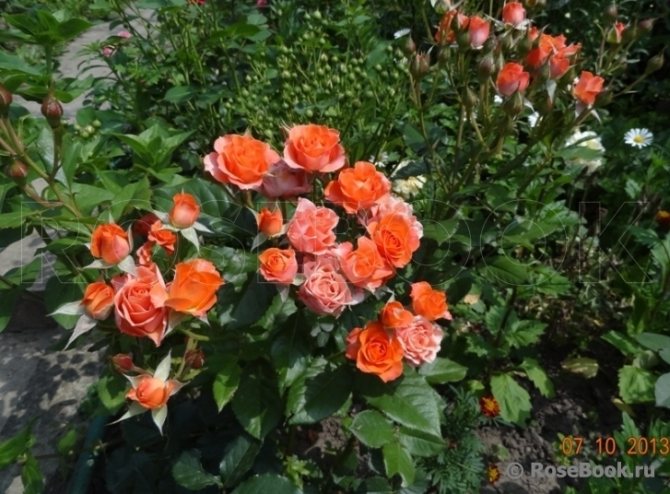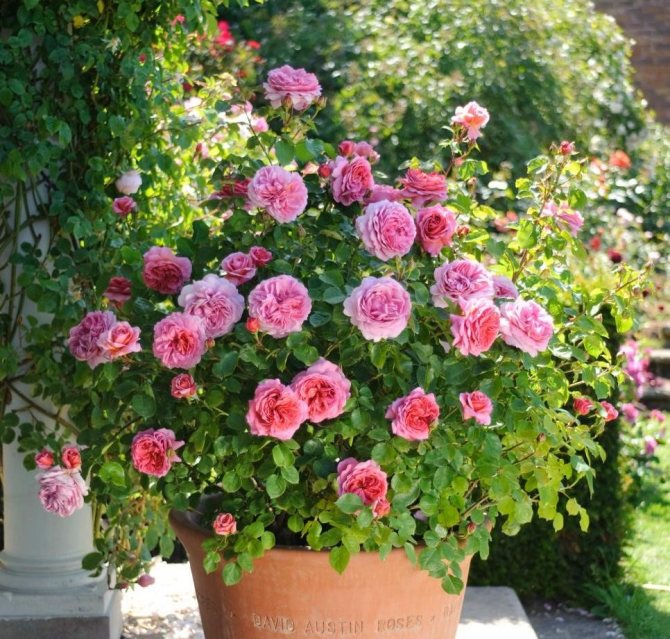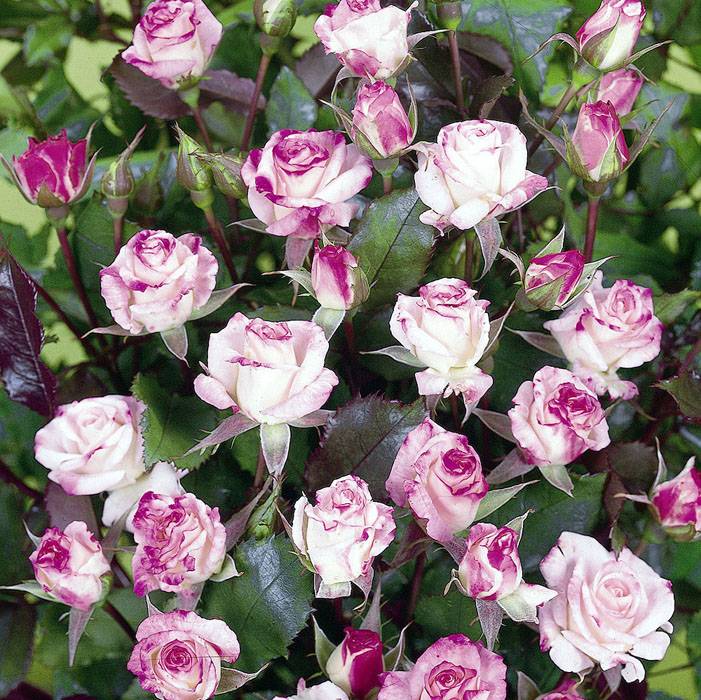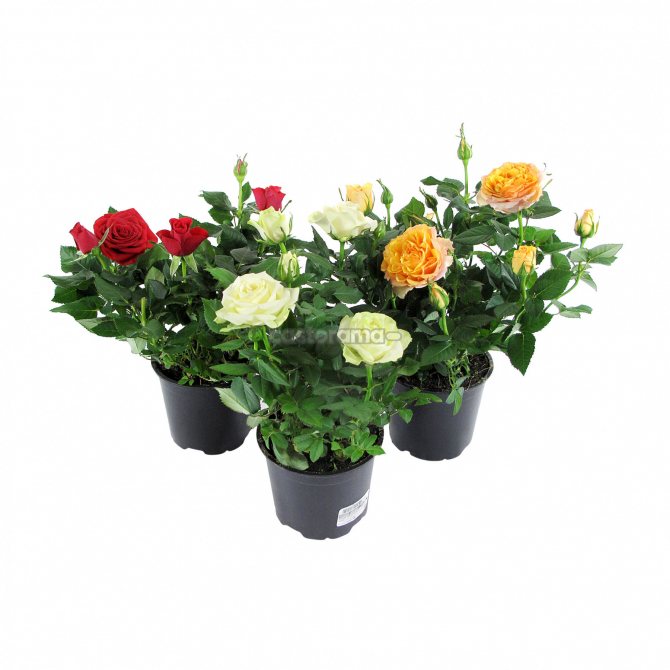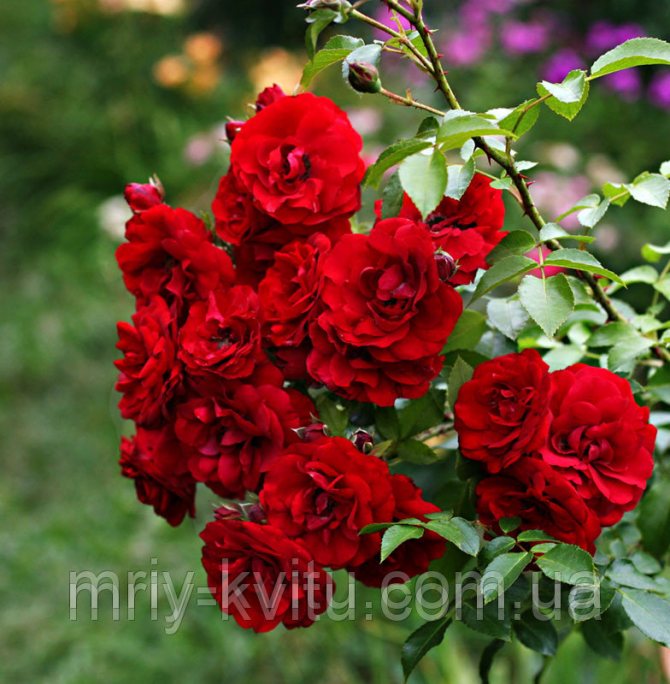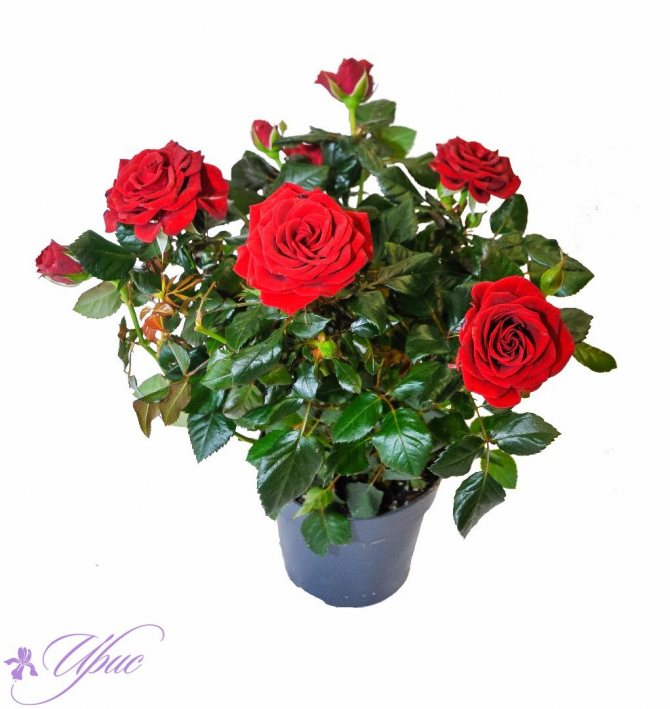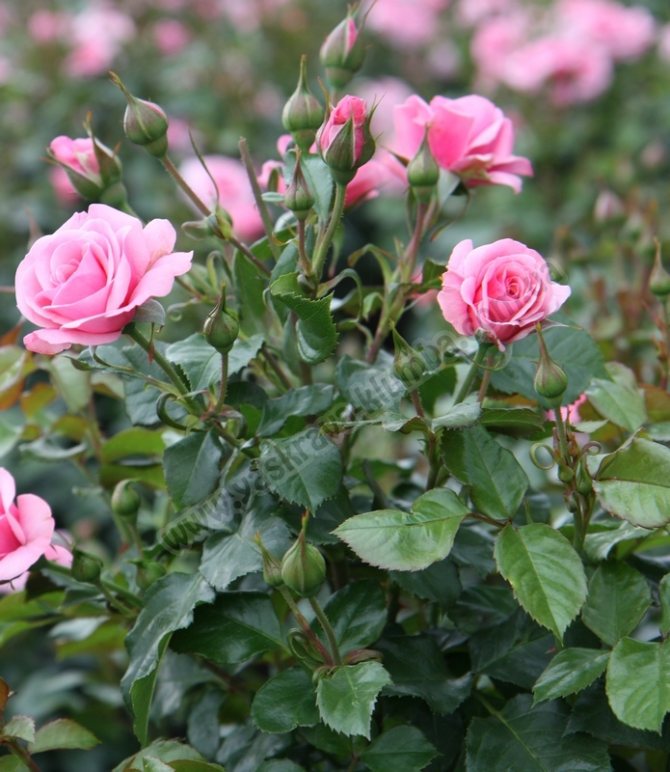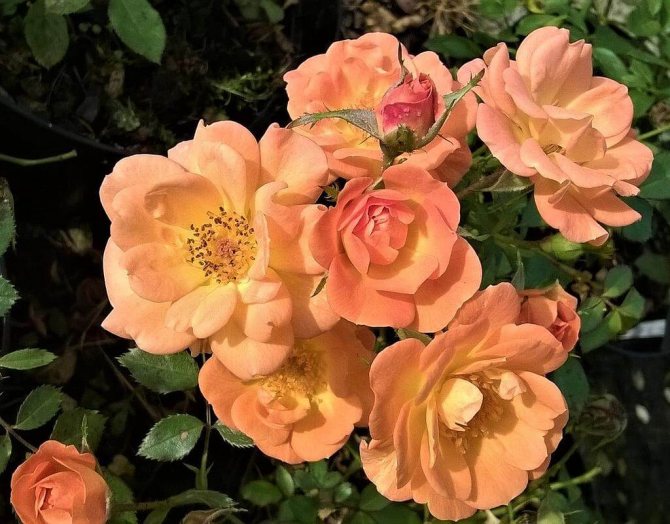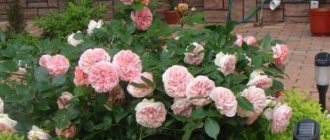Roses have long been considered a real decoration and pearl of garden plots. Many admire her and call her the queen of the garden. To date, breeders have bred many different varieties of this culture, which have a different bush shape, height, as well as the color and shape of the inflorescences.
Countless decorative and miniature potted patio roses can be seen on the shelves of garden shops. They are represented by small border flowers that can be easily grown both outdoors and at home.
Patio roses: varieties and types
BabyMaskerad. It is unpretentious, with a weak aroma, frost and drought resistant variety. Looks good in flower beds and in pots.
Baby Baccarat - France (Meilland). These roses look beautiful in pots in front of the house. They are bright and memorable.

LavenderJuel - USA (Moore) 1978. This is one of the most beautiful miniature roses with double mauve flowers. It blooms for a long time, but after the final disclosure, the flowers fade to a lilac hue.
Korsnoda. Very hardy white rose, resistant to many diseases.
MimiEden - France (Meilland). A wonderful two-tone rose with ivory petals on the outside and pink on the inside. There are 8-10 flowers in brushes, which bloom alternately.
Lydia - Holland (Interplant) 1990. Light pink color, not double, the middle is visible through the petals.
Petito. Yellow rose with red stripes, unpretentious, disease resistant.
Rumba - Denmark (Poulsen). A very beautiful variety, bred in 1959 and still popular among rose lovers.


Epricot Clementine - Germany (Evers). A rose with large apricot flowers will adorn any garden and home.
Another name for these roses is "border roses". Patio roses, varieties and types of which continue:
- AnnaFord. This rose has red-orange flowers with a yellow eye
- Gentle Touch. This rose is characterized by pale pink flowers
- Honeybunch. It is a variety with dense double flowers reminiscent of honey color and fragrant aroma.
- StrawberryFayre. Red and white striped flowers with a delicate scent. This rose has golden yellow flowers with petals slightly bent outward.
- Sunseeker. Scarlet flowers with a yellow center
- SweetMagic. The flowers of this rose are of an unusual color: golden yellow with orange streaks
Patio roses, their various varieties and types will always attract attention with their endurance and the extraordinary beauty of endlessly blossoming inflorescences. They can no doubt be called the little treasures of your garden!
"Baby Masquerade"
Have "Baby Masquerade" very beautiful color. When blooming, the petals turn yellow. The edges of the petals are scarlet. Further, the petals are folded back, and they turn red. After some time, the flowers may fade. The inner side of the petal is paler. The outer petals change color more often than the inner ones.
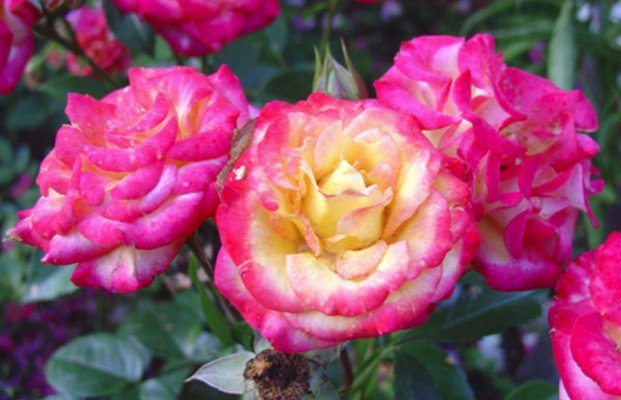

One stem can have from 3 to 5 flowers. The flower is 2 to 3 centimeters in size. Oval buds. The flowers are in the form of a bowl with double flowers. One flower can have from 38 to 42 double petals. One inflorescence contains from three to twelve flowers. The plant is low, 20 to 30 centimeters high.Sprawling bushes, can reach 40 centimeters in width. Leaves are pointed-elongated, dark green in color. It blooms very profusely. The bushes are frost-resistant.
The plant does not actually get sick with fungal diseases. "Baby Masquerade" is planted both in pots and in open ground. Used to decorate borders. Planting can be group.
Did you know? The oldest image of a rose bush is over 4,000 years old. It was found on the island of Crete.
Description of varieties
At the end of the last century, Patio roses were singled out as an independent group. Despite this, in some catalogs, these plants are still classified as species such as miniature or Floribunda.
Patios were obtained as a result of breeding work on crossing curb and undersized varieties. The very first varieties were bred Marlena and Meteor.
These flowers are stunted. However, among the Patio, there are also taller representatives. They differ from other species in the shape of the leaf blade and flowers. For example, Patio flowers and leaves are smaller than Floribunda, but larger than miniature ones. Flowers differ in a variety of shapes and shades. They can be plain or terry. The largest specimens reached 5 cm in diameter.
The bush has compact dimensions. It grows up to 55 cm in height. Such plants are often grown on boles. Here you can achieve a height of 1 m from them.
Representatives of this variety are often used by designers to create landscape displays.
"Korsnoda"
These plantings are referred to as spray roses. This is a new kind of rose bushes. Small, perfectly shaped flowers are collected in large inflorescences. From one branch, you can make a whole pink composition. In many ways, these shrubs can be classified as patio roses. But there are some differences. Small flowers are collected in clusters that form separate bouquets. The height of these bushes reaches half a meter. Bushes bloom very profusely. They are used for planting in gardens in flower beds, decorate balconies, and grow them in pots. Also, this type of planting is suitable for creating bouquets.


Type of roses "Korsnoda" was opened in 2007. The rose bush blooms throughout the season. Grown to decorate borders. Milky white flowers are 4 to 5 centimeters in diameter. After the plant blooms, its petals are bent downward. The width of the bush is 75 centimeters. From 3 to 5 buds grow on the stem. Leaves are matte, green. The plant is not afraid of diseases, rain and frost. It is very easy to clean. "Korsnoda" has a slightly audible aroma.
Important! The spray look is very similar to the patio look, but there are some differences. It consists in the fact that the flowers of spray roses are collected in inflorescences, while the buds of patio roses are not of this quality.
How to plant and care
To get good flowering from these roses, you need to properly plant and care for the bushes. Saplings can be planted in garden soil or in flower pots. In the open ground, planting is carried out in early spring. Before transferring to the soil, the root system of the seedling should be opened and soaked for several hours in water.
Patio roses love open and sunny areas. In a place suitable for their growth, a hole should be dug with a diameter and depth of about 45 cm. A drainage (expanded clay or pebble) is placed on its bottom, which is covered with sand from above. Organic fertilizers should be placed on top of the sand layer. Grass and leaves will do. You can also add manure. After that, the plants are placed in a hole and covered with earth. Then the soil around the seedling is compacted
A room rose, after buying in a store, needs a mandatory transplant. This procedure is performed according to the same scheme as planting a purchased seedling in open ground. After planting, the plant should be well watered. For this, warm water is taken.
In order for a planted plant to take root, you need to know how to care for it correctly. Caring for representatives of the Patio variety, both in the garden and at home, is simple. However, despite this, there are several rules that must be remembered when growing such roses:
- the flower should be well lit during the day. It tolerates direct sunlight normally. But when transferred from home to garden, the plant must adapt to the new light regime. To prevent sunburn, roses should be shaded a little at noon;
- watering is performed regularly. However, you should avoid the flower bay. Spraying of leaves is allowed. For irrigation, only settled and warm water is taken;
- during the season, top dressing is mandatory. Here you need to use fertilizers specially formulated for roses. Top dressing is applied carefully so as not to overdo it.
As you can see, caring for these flowers at home and in the garden really does not require a significant investment of time and effort. Any novice florist can cope with this task.
Rose care spray
This plant is not capricious and caring for it is simple. In order for such roses to bloom well, they need to be fed. In the spring they need fertilizers with nitrogen, and during flowering - with potassium and phosphorus. Many flowers, for example, Victoria spray rose and other similar varieties have good winter hardiness; on the eve of the onset of frost, their bushes must be spud and covered with protective material. Pruning roses is of great importance: it prolongs flowering and promotes rejuvenation of the plant. It is necessary to regularly remove from the plants faded buds, in which pests can develop.
How to water a rose with spray?
To maintain abundant flowering, the street spray should be watered regularly, and in the summer this should be done either early in the morning or late in the evening. To prevent moisture from evaporating from the surface of the ground so quickly, it is better to cover the soil around the bushes with a thick layer of mulch or loosen it after each watering. Rose spray Mandarin, Barbados, Satin and many others can be sunburned, so in a particularly hot period, shrubs can be periodically sprinkled. With the approach of autumn, watering of roses should be reduced.
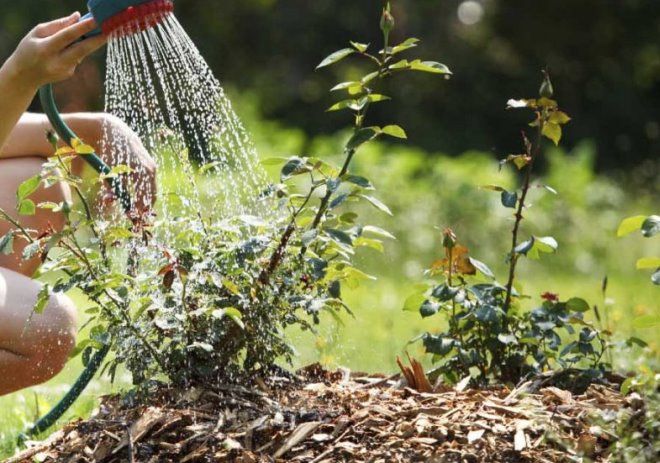

Reproduction technique
Patio can be propagated in two ways:
- cuttings;
- by grafting the shoot on the dog rose.
Both methods are quite popular, but cuttings are still used more often. They can be cut from the mother bush at any time. However, twigs cut at the beginning of summer take root best of all. A cut shoot should have a bud, flower, bud or stem.
The stalk takes root in moist and loose soil. Before planting, it can be placed in the water until the roots appear.
"Red Macarena"
"Red Macarena" refers to spray roses. Pomegranate petals, double flowers. One branch looks like a whole bouquet. The shape of the flower is goblet. The diameter is up to 4 cm. The inflorescence includes 3 to 5 flowers. The height of the bush is from 40 to 55 centimeters. Blooms from May until the first frost. In width, the bush grows up to 40 centimeters. The branches of the bush are straight. The foliage of the plant is dark green, matte. You can plant a planting either in the spring or in the fall.


The plant has a very delicate aroma, is not afraid of fungal diseases and frost, but is afraid of rain. The main purpose of the plantation is to decorate borders and flower beds.
In order for the roses to grow well and bloom beautifully, you need to know: when to plant (in spring or autumn), how to feed it and how to prepare it for winter.
Wintering conditions
Garden roses of the Patio variety are transferred to the house for the winter. Although they can be left to winter in the garden. In this case, the bushes are covered with spruce branches. A wire frame is built around the plant, which is covered with a film on top.From mid-spring, such a structure should be opened for ventilation. The insulation is removed in the presence of an established warm weather.
When transferring a rose to the house for the winter, it should be additionally illuminated with fluorescent lamps. The room temperature should be at around +20 degrees. If these conditions are not met, then the flower will go into hibernation. For shallow sleep, you need a temperature of +15 degrees, and for deep sleep, +5 degrees.
Patio rose will be an excellent purchase, both for the garden and for the home. Minimal care of the bushes will allow you to achieve long and abundant flowering from the plants.
"Lydia"
"Lydia" bred in Holland in 1995. This variety also belongs to spray roses. This plant is small in size. Flowers grow in inflorescences of 15 pink flowers. Small buds. The rose blooms profusely. Such inflorescences are called "splashes". Hence the name of the planting variety "spray". The bud diameter is less than 4 centimeters. The maximum plant height is 80 centimeters. The usual height of a bush is 60 centimeters or less. These roses are suitable for making bouquets, cutting one branch, you can get one neat bouquet. This is a frost-resistant plant, but in severe frosts it is better to cover the bushes with special material. Due to the small size of the bush, this is easy to do.
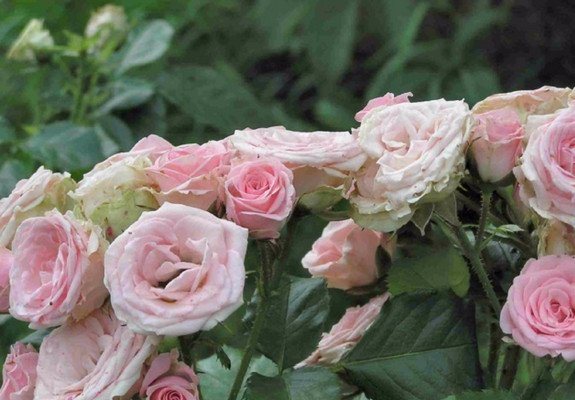

At three years old, roses are considered adult plants. Their roots were fully formed by this time. You can grow "Lydia" both in a pot and in open soil. If you decide to plant a plant in the garden, the bushes look most natural in a group of 5 plantings. The plant is unpretentious in care. Blooms all year round.
Learn more about all the intricacies of growing: spray, tea, Dutch, park, Canadian and English roses.
Video "Patio rose variety"
In this video, you will learn how to grow Patio Rose and other indoor varieties.
Patio roses have recently been singled out as a separate group. This only happened at the end of the 20th century. The shortest (but not all) roses were separated from the floribunda group roses, which received the name patio roses.
As a result of breeding work, the collection undersized or border roses replenished with new varieties. The very first include such varieties as Meteor, Marlena and others.
However, until now, patio roses are not always singled out as an autonomous group. For example, in flower catalogs, these varieties can be found among floribunda or miniature roses. The plant differs in size and shape of flowers and leaves. So, patios have less leaves and flowers than floribunda roses, but more than miniature roses.
These flowers are often used by landscape designers for planting in flower beds and mixborders, for decorating small gardens and outbuildings, as well as for planting in containers.
Patio roses represent small and compact bushes, the height of which does not exceed 55 cm... Very often they are grown on boles no more than 1 meter high, where they look very beautiful.
Flower shapes are varied, as are their colors. Depending on the number of petals, the flowers are double and simple. The largest flower has a diameter of about 5 cm, and the smallest - only 2.5 cm.
The patio group should also include spray roses. They differ in that the flowers are collected in large inflorescences. Such roses make magnificent bouquets.
Rose spray - what is it?
Not only beginners, but also experienced flower growers often ask themselves the question, rose spray - what is it? This new variety, also called a patio, has become especially popular lately. Incredibly beautiful, bright flowers with exquisite buds collected in a brush will be appropriate in any flower arrangements and landscape design. They look especially beautiful in a wedding bouquet as a background for larger flowers or as a separate mini-bouquet.
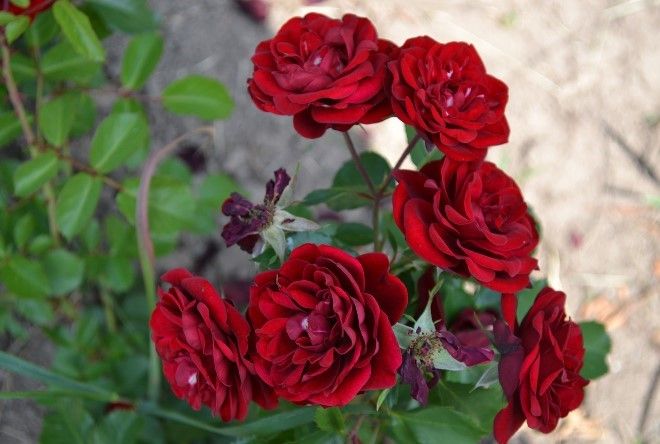

Varieties
Milky Way - spray rose, the height of which does not exceed 60 cm. Differs in large flowers, the diameter can reach 8 cm. Flowers have a pleasant aroma and pale pink color. The variety is actively used for mixborders and flower beds, as well as for planting in containers and flowerpots.


Milky Way
Korsnoda - a spectacular variety with double white flowers, the diameter of which is no more than 5 cm. The height of the plant does not exceed 60 cm. The flowers do not have a pronounced aroma. These roses are great for flower gardens, mixborders, as well as for container plantings. The variety is frost-resistant and disease-resistant.


Korsnoda
Rose spray Macarena- this plant is no more than 60 cm high. The flowers have a delicate apricot color. Their diameter is about 5 cm. It is a varietal variety with a light aroma. Differs in resistance to diseases and frost.


Macarena
Pink Flash - a bright varietal variety of spray roses. Densely double flowers are distinguished by a juicy one-time color. Flowers can grow up to 10 cm in diameter. The plant has a height of about 60 cm. It has a pleasant light aroma. The variety has good frost resistance. The plant is an excellent solution for mixborders and flower beds.


Pink Flash
Rose Spray Summer (Summer) - This is a bright varietal variety of patio roses. The flowers are rich yellow. The flowers can be up to 8 cm in diameter. They have a light aroma. The plant is unpretentious and resistant to frost and disease.


Summer
Baby Baccara - patio roses with deep red flowers, the diameter of which does not exceed 6 cm. The plant grows up to 60 cm. This is an ideal solution for flower beds and container plantings. Looks good in the edging of flower beds.
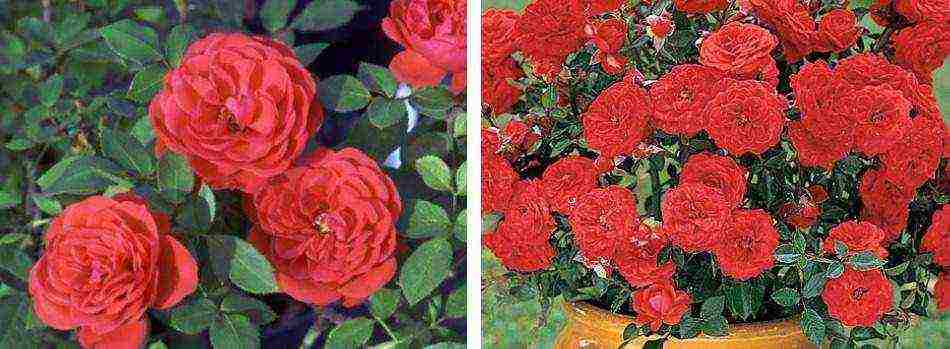

Baby Baccarat
Typhoon - spray rose with beautiful red flowers with a deep orange tint. The diameter of the flowers is about 5 cm. The height of the crop is about 70 cm. The variety is distinguished by its unpretentiousness to keeping conditions and resistance to frost. The variety is used for planting in containers and flower beds.


Typhoon
In Russia and not only, patio mix roses, Danica and Hit mix are very popular. These are low (about 30 cm) and compact bushes with double flowers of various colors.


Such flowers are often grown in pots at home and in the garden, and are also planted in flower beds and flower beds. In the care of the plants, they are unpretentious. The varietal variety Gemeng (Monde Gemeng) is widespread.
How to care for such roses? There is nothing difficult about this. Even a beginner in floriculture can cope with the care of patio roses. Let's consider all the points in more detail.
Top dressing
Roses love feeding, so it is worth taking care of complex fertilizers that will help the plant develop successfully, grow and delight the owner with beautiful flowers. It is recommended to use a universal fertilizer for flowering indoor flowers. This is an organic fertilizer that must be applied during the period of active growth once a week.
Miniflora roses are wonderful plants that are loved all over the world for their variety, richness of flowers, delicate aroma and persistence. Easy care makes this plant ideal for beginner growers, as it is quite easy to grow a border rose, and all kinds of varieties allow you to create your own collection of these magnificent bushes.
Landing
It is recommended to plant seedlings in open ground in early spring. Before planting, the root system, if it is open, is recommended to soak for two to three hours in water.
For planting, it is recommended to choose a sunny and open area. The hole should be about 45 cm deep and in diameter so that the root system is spacious in it. At the bottom of the hole, it is necessary to make a drainage layer: small pebbles (pebbles, expanded clay or broken brick) are laid at the very bottom, and a little sand is poured from above.
It is recommended to put organic fertilizers on top of the drainage. Dry foliage, grass, or decay can be used. It is not superfluous to put a little manure on the bottom of the hole.
The seedling is planted in a hole, covered with the top layer of soil. The soil compresses well around it.
Important! If a rose seedling was purchased in a container, then it needs to be transplanted. A transplant after purchase is necessary and uncomplicated process... Initially, you need to carefully remove the rose from the container. The planting process itself is no different from the above.
It is recommended to make a small depression for water next to the rose bush. After the plant has been planted, it must be watered. One plant requires about 8 liters of water. For irrigation, you need to take warm water that has been heated by the rays of the sun. It is advisable to use rainwater. When using tap water, it is recommended to let it stand for a few days so that all the chlorine is released from it.
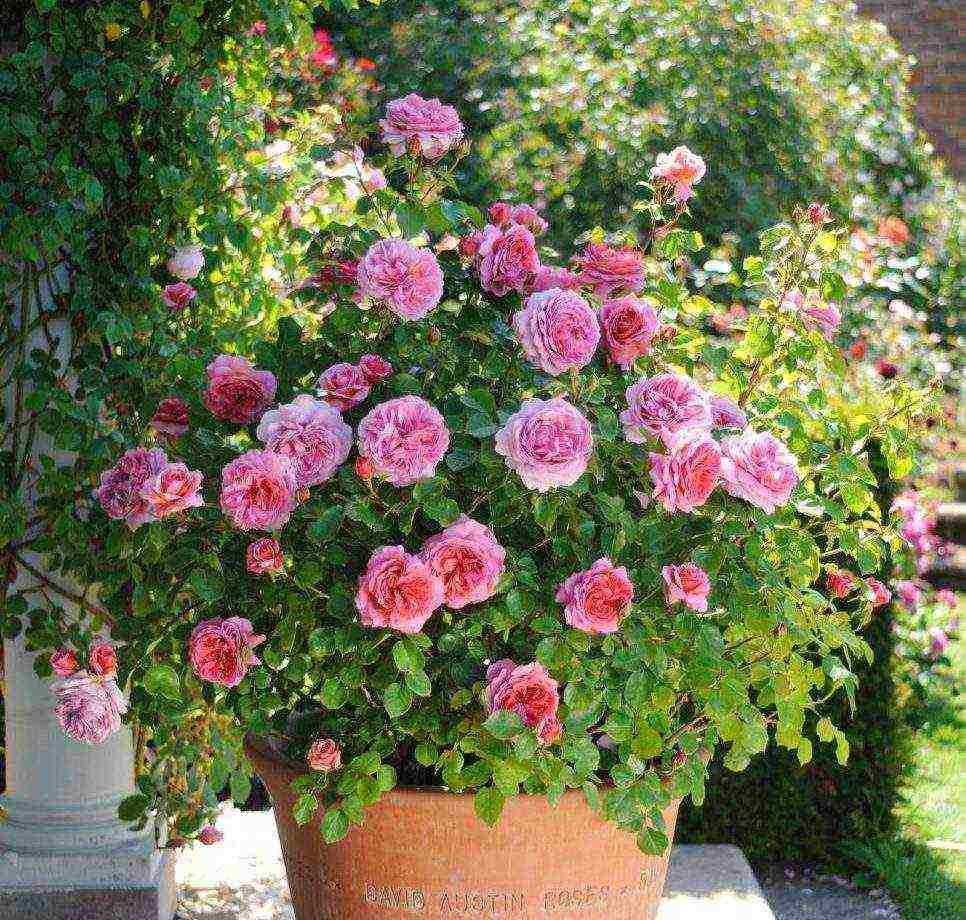

Planting rose spray
To plant these roses, you need to choose a place protected from the wind. Moreover, light varieties are best planted in a sunny area, and dark ones in partial shade. Otherwise, in too bright sun, the intense color of the buds will become light. It should be remembered that these roses do not like waterlogging and wetlands. The soil for the rose spray should be prepared in the fall. It must be dug onto the bayonet of the shovel. In the spring, the soil must be leveled and holes for planting 50x50 cm in size must be dug.
The distance between the roses, the spray should be kept within 30-40 cm. Drainage is laid on the bottom of the recess, humus or compost on top. After sprinkling organic matter with a small layer of earth, we place the plant in the hole and add a drop in it, carefully compacting the soil so as not to damage the roots of the seedlings. Water the planting with warm, preferably rainwater at the rate of 8 liters per rose bush.
Care
Caring for patio roses is easy both at home and in the garden. How to care for the garden and at home?
Location
It is recommended to grow a culture in a bright place, be it a window, balcony or open ground. In garden plots, direct sunlight is not harmful to the rose. However, if it has been growing at home for a long time, then before transferring the plant to the garden, the flower will need to adapt to the rays of the sun. This also applies to newly purchased flowers.
To prevent the appearance of sunburn at noon, when the sun is too bright, it is advisable to protect the plant from the rays. And so that the root system does not suffer from overheating, the pot can be placed in a large and light pots, or wrapped in white paper.
It is required to regularly ventilate the room. In a dark patio area, the rose will grow poorly and slowly, and may also refuse to bloom.
Watering and moisture
Watering the crop is required regularly. He should be moderate. It is not recommended to allow complete drying of the soil between watering, only a slight drying of the top layer of the soil is allowed.
Stagnant water is also dangerous for the rose.... It can lead to decay of the root system, therefore, the plant cannot be transfused. In addition, a drainage layer is required in the soil or at the bottom of the pot.
Spraying is allowed, but not in direct sunlight. This procedure will help you to endure the heat and heat. However, over spraying can lead to the development of fungus.
Important! For irrigation, it is recommended to take exceptionally warm and settled water.
Top dressing
Top dressing must be applied throughout the spring-summer season. They are also allowed in winter, but only if there is additional lighting.
Special fertilizers for roses are used as top dressing. These can be purchased at flower shops. It is better to make top dressing often, but in small portions. This will improve assimilation and prevent soil oversaturation.
It is not recommended to start feeding the plant immediately after purchase. It is better to start fertilizing after 3 months. This is due to the fact that the roses on sale are already well enriched with special long-acting dressings. And additional application will cause salinization of the soil.


Wintering in the garden and indoors
For the winter, some dig up the plant and carry it indoors for the winter, others leave the patio rose in the garden to winter. In this case, it is required to cover it with spruce branches. A wire frame is placed around the bush, which should be several centimeters higher than the bush itself. Material and polyethylene film are laid on it. Starting in mid-spring, the plants need to be ventilated, and soon the insulation is completely removed.
Since the rose often lacks natural light in winter, the use of artificial lighting lamps is recommended. In this case, the air temperature should be about 20 degrees. However, if such conditions cannot be provided, then the plant can be sent to winter. Wintering can be deep or shallow.
For shallow sleep, the plant needs to provide a temperature of no higher than 15 degrees. And for deep sleep, the temperature is lowered to 5 degrees. However, the temperature must be lowered gradually. In deep sleep, the rose throws off the leaves, and the lack of light no longer scares her.
Pests
The plant is often affected by spider mites. You can find it by a whitish bloom in the form of a cobweb on the leaves. It is required to fight it with the help of insecticidal agents ("Aktara", "Aktellik", "Fitoverm" and others).
Watering
Roses love moist soil, so you need to water them as the soil dries. Avoid stagnation of water in the pan, as this can lead to the death of the plant. It is very easy to check whether the plant needs to be watered; it is easy enough to press down on the ground with your finger. If the soil is moist to the touch or if water is released when pressed, then watering is not worth it, since there is enough moisture. If the finger is not wet, then the plant should be watered. It is recommended to check the condition of the soil daily to prevent drying out.
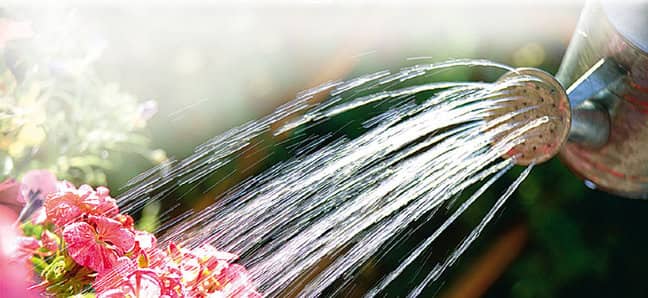

Watering a flower
It is necessary to water the roses with settled water. Never use running or cold water. Water at room temperature or slightly lukewarm will do just fine. If water remains in the pan after watering, it should be drained to prevent acidification.
Do not spray the rose, as this leads to a greater risk of developing fungal diseases that are dangerous for the plant. Some of these diseases can destroy a beautiful plant in just a couple of days. In addition, you should regularly inspect the plant for diseases so as not to miss their onset.
How to buy seedlings correctly?
When buying, you should pay attention to the appearance of the plant itself. The stems should not have black dots. The leaves should adhere firmly to the stems, be resilient and glossy.
Faded leaves are the cause of overheating of the culture, whitish bloom is a sign of a spider mite's damage to the plant, and brown spots signal the presence of a fungal infection.
You should also check the plant for pests.
The packaging must be of high quality. It needs information about the variety of the rose, the color of the flowers.
"Mimi Eden"
In France in 2001, Allam Meiland showed his new rose - "Mimi Eden"... The bushes of this plant are low - only half a meter in height, do not have thorns. Branched and long shoots. The leaves are small, dark green in color. Terry flowers, reach 3 to 4 centimeters in size. Outside, the petal is white with a greenish tint, and inside it is pink. The inflorescence is an amalgamation of buds of 5 to 10 flowers. A larger number of flowers in one "cluster" is also possible.


The inflorescence looks like one neat bouquet. One flower blooms for up to 20 days. After flowering, it falls away from the parent plant. This helps the buds to be "nourished" with nutrients. The plant blooms from the beginning of summer almost to the very frost. The bloom is strongest in June. It tolerates rain well, but the sun does not. Make sure that the sun does not scorch the flower.
Important! "Mimi Eden" does not tolerate the sun well.
These rose bushes winter well in our latitudes."Mimi Eden" actually does not get sick. The exception is cases when roses are planted too densely, then they can get sick with black spot.
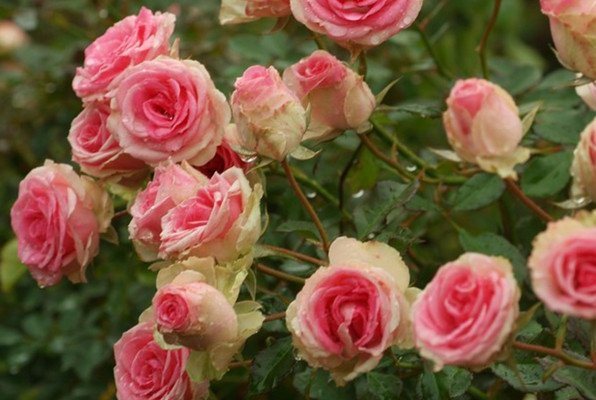

What to do after purchase?
Immediately after purchasing a patio rose in the store, you will need:
- Wash under a warm shower. This will remove dust from the rose and reduce the number of spider mites, if any;
- Gently remove the rose from the pot along with the earthen lump and transplant it into a larger pot with fresh soil, which is specially designed for roses;
- For the prevention of pests, the flower should be sprayed with Aktara solution;
- If the plant shows signs of fungus, then it must be treated immediately with fungicides.
Pruning
Do not let the young bush bloom flowers right away. The flowering of such a plant that has not matured very much depletes its strength and interferes with its proper development. Roses are often sold with one stem, but if there are several of them, then their root systems should be carefully divided. Germination of roots occurs quickly if they are soaked in water with the addition of special growth accelerators, for example, "Kornevin".
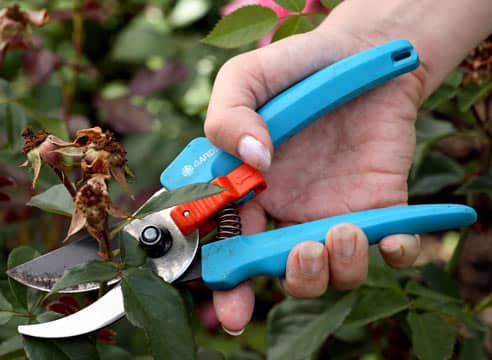

Plant pruning
When the first bud is tied, it should be grafted to an already mature bud. Of course, it's a pity to lose the first bud of the bush, but this way, new shoots can grow. Buds will also begin to develop on these shoots, which also need to be pinched, this is the only way to form a beautiful lush bush.
Two grafts should be done, this will be enough for the development of a large number of shoots. In the future, care will consist of regular watering and minimal pruning.
Application in landscape design
The culture is actively used by flower growers and landscape designers to decorate garden plots. Patio roses are great for low curbs, for good reason they are even called curbs. They look great in flower beds and flower beds, especially in the bordering of flower beds. Also good in mixborders.
In the photo below, flowers in pots in the garden. These pots are suitable for terraces:
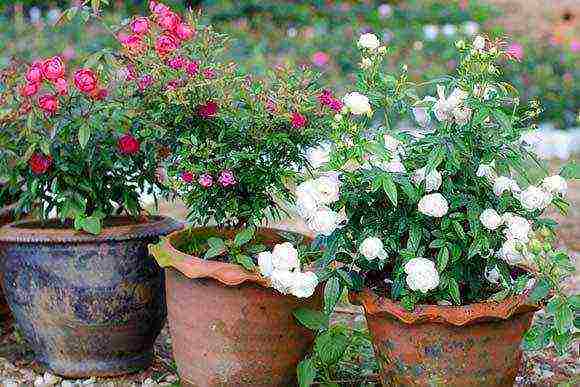

Flowers look good in foregrounds in rose gardens. They are used to decorate the entrances to buildings, stairs and terraces. Also looks good on rocky slides and in resting corners.
Delicate cream and pink patio roses in containers and with a stem will make your veranda or loggia incredibly beautiful and elegant:


The photo shows patio roses in the garden in a container, formed by a trunk.
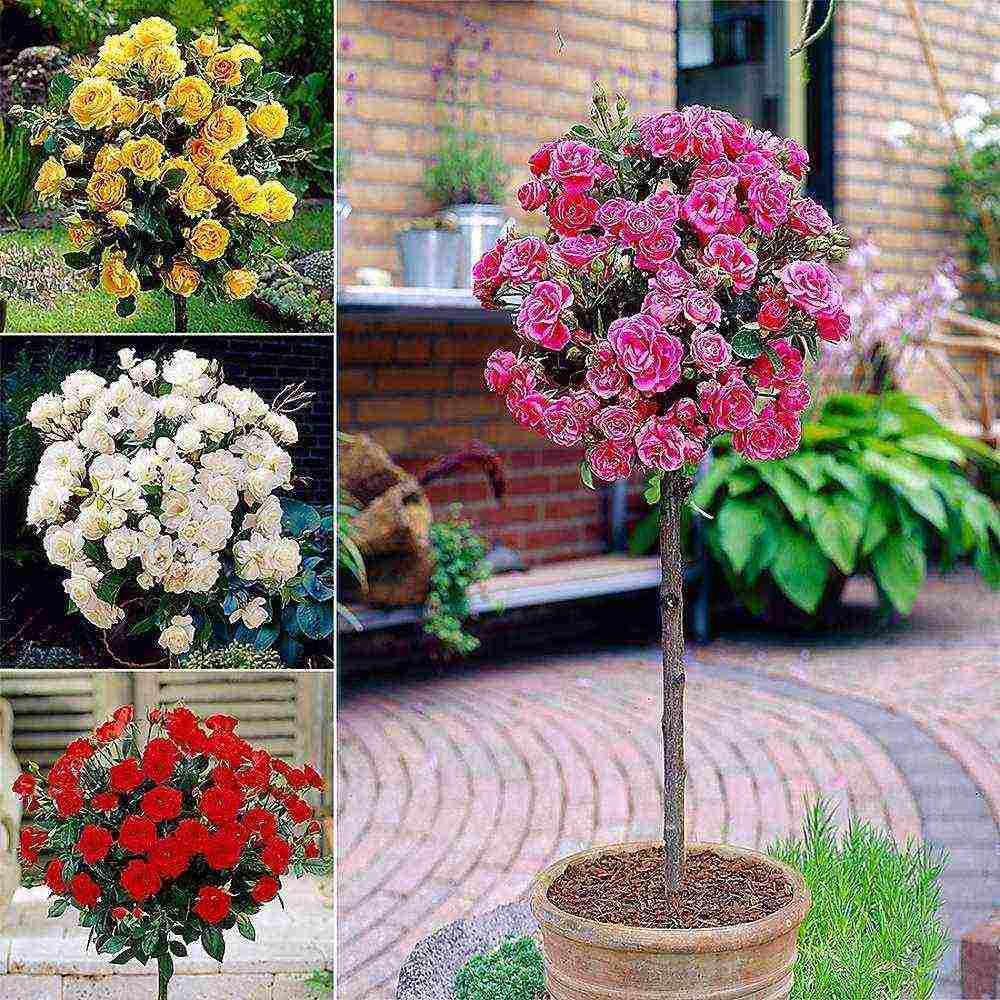

Container patio roses work great as a tapeworm, but there is nothing to limit the combination of similar plants with other container crops. The only caveat: it is worth choosing plants that do not interrupt the exquisite and "expensive" beauty of roses. Given that these are miniature roses, standard partners such as lavender, conifers and perennial herbs can be questionable - it is worth looking at individually whether a particular variety will withstand such partners. Compositions in containers will require known skill and careful planning.
The photo below is an example of a container composition:
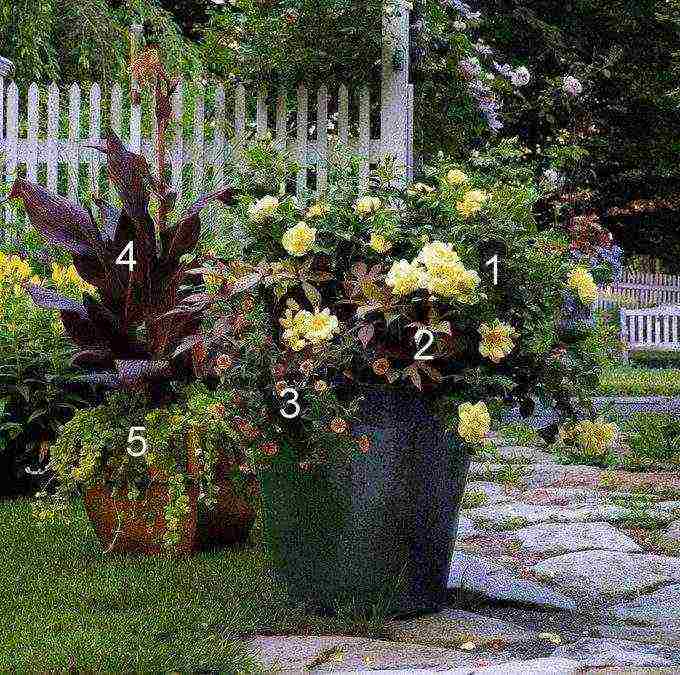

Green pot in the foreground: 1. Yellow roses, 2. Sweet Caroline Bronze morning glory, 3. Celebration Carpet calibrachoa. In the yellow pot on the left: 4. tropical canna (Canna tropicana) and 5. lusimachia "Aurea".
These roses are often used for cutting. They make very beautiful bouquets, including wedding bouquets.
The culture is great for creating curbs, that is, decorating walls and fences. In the photo there are plants on boles and without them.
Growing roses spray - tips
In order for the rose spray Fire Flash, Midget, Leili Flirt, Mirabelle and other varieties to take root well after planting and delight with excellent long flowering, it is necessary to follow some rules for caring for them:
- For group plantings of roses, the spray should be placed in the foreground so that tall plants do not shade them.
- These roses do not like to be in a draft, but even without air circulation, they will be exposed to fungal diseases.
- Groundwater should not come close to the soil surface in the area with roses.
- Avoid crowded plantings.
- When planting in autumn, the seedlings must be rooted about a month before the onset of frost, then they will winter well.
Planting and leaving
Planting spray roses is not a difficult process at all. It is recommended to choose a sunny place for planting. However, some varieties fade in the sun, so a small partial shade is fine.
In order to plant a plant, you will need:
- Dig a hole measuring 45 * 45;
- Put drainage (pebbles, sand) on the base of the fossa;
- Put organic fertilizers over the drainage (dry leaves, rot, humus, manure);
- Plant the plant in a planting hole, cover with soil and compact around the stems;
- Pour with settled and warm water (8 liters of water per bush).
These cultures are unpretentious. From spring to July, fertilizing with a high nitrogen content is required. And in the summer and until autumn, the plant needs trace elements such as potassium and phosphorus. It is very important to apply fertilizers during the budding period and at the end of flowering.
The soil around the stem must be loosened regularly. Watering should be moderate.
Roses need shelter for the winter.
About rose Patio hit mix: planting and care in the garden and at home
Roses have long been considered a real decoration and pearl of garden plots. Many admire her and call her the queen of the garden. To date, breeders have bred many different varieties of this culture, which have a different bush shape, height, as well as the color and shape of the inflorescences.
Countless decorative and miniature potted patio roses can be seen on the shelves of garden shops. They are represented by small border flowers that can be easily grown both outdoors and at home.
How to grow a potted indoor flower?
Landing
Growing a rose mix from seeds is a difficult and time-consuming task.... Under natural conditions, seeds are kept in the soil at a certain temperature throughout the winter, which contributes to accelerated germination. At home, you need to create similar conditions. What is needed for this?
- A material capable of retaining moisture (cloth, cotton pad, etc.) must be soaked in a solution of hydrogen peroxide, put rose seeds on it, and covered with a layer of the same material.
- In this form, the seeds are placed in a plastic container or plastic bag and sent to the lower compartment of the refrigerator for 2 months. During this time, you need to control their condition, if necessary, moisten the surrounding matter.
- Sprouted rose seeds are planted in seedling pots. The room temperature should be approximately 18-20 ° C. The sprouts need good lighting for 10 hours.
How to care?
Rose mix requires constant monitoring and control. Ignorance and non-observance of the rules of care can lead to disease and death of the plant.
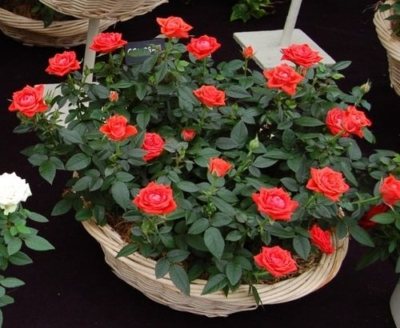

Conditions of detention:
- A place... This rose will be comfortable on any windowsill except the northern one. The east side is best. The plant should be protected from direct sunlight. If the window is facing south, on a sunny day you need to close the blinds or create a protective screen.
- Temperature... In summer, the most comfortable mix for a rose will be a temperature of 18 - 23 ° C. In winter, the flower should be transferred to a cooler place (8 - 13 ° C). Too cold air leads to root system disease.
- Humidity... For normal growth of a rose, the mix indoor air should be high or moderate humidity. During the heating season, the plant should be regularly sprayed with warm water. Once a week, it is good to have a shower for your pet. In this case, the soil should be covered with polyethylene.
- Lighting... Rose loves continuous bright, diffused light, BUT NOT DIRECT SUN RAYS.
- Watering... In summer, the flower is watered moderately 2 times a day - in the morning and in the evening. In winter, during the dormant period, the frequency of watering is reduced to once every two days in small portions. The water must first be defended. At the time of watering, it should be at room temperature. Do not allow the soil to dry out. But too wet soil can oxidize.
- Top dressing... In the spring, before active flowering, the plant needs to be fed 4 - 5 times. No longer recommended. Excess fertilizer stimulates active leaf growth. At the same time, the number of colors is reduced. It is better to introduce complex fertilizers for flowering plants. Also, you can alternate between phosphorus, potash and nitrogen fertilizers.
Transfer
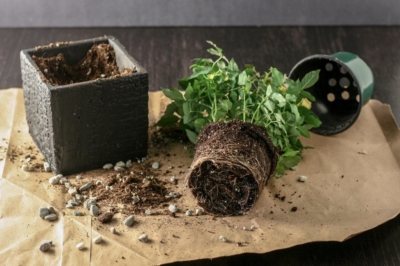

A rose mix is transplanted in two cases:
- If the plant is new, it just arrived from the store.
- If the roots have completely filled the container and transplant into a larger pot is required.
The new plant is not transplanted immediately.... He needs several days to get used to new conditions.
- Choosing a pot. Its diameter should be 2-4 cm larger than the previous one, and its height should be 5-7 cm. There must be a drain hole at the base.
- Priming. You can buy it ready-made in the store, or you can cook it yourself. It should consist of 1 part of sand, 4 - humus, 4 - turf with the addition of complex fertilizer.
- A layer of expanded clay 1 cm thick is laid out at the bottom of the pot. Next, a layer of earth is poured. It is recommended to add moss and fertilizer.
- The rose is spilled abundantly with water before transplanting. When the earthen lump gets wet well, it is taken out of the pot and transplanted. There is no need to shake off the roots.
- Sprinkle the plant in a new place with earth. The soil is compacted. Additional watering is not required. It is enough to sprinkle the foliage with water from a spray bottle. A day later, the rose needs to be watered.
How can you help the rose to adapt?
As soon as the rose gets into your house, immediately free it from the plastic cup in which it is often sold. Clean the surface of the soil from fallen leaves and carefully examine the plant for diseases and pests. Remember that the first 2-3 weeks after buying a rose will be the most difficult and stressful. Be prepared that the rose can shed all the buds and flowers, and even the leaves. But after the adaptation period has expired, the rose starts to grow and blooms again after 1-1.5 months.
The first 2-3 weeks after purchase for a rose will be the most difficult and stressful.
J. Tadeusz: “Start caring for your rose immediately after purchase. Even if outwardly you did not find any pests, immediately after you bring the rose home, wash it under a warm shower. This will be a good prophylaxis against spider mites. It is even better to treat the rose prophylactically with a systemic drug for pests Aktara. You just need to remember that Aktara works against almost all pests, except for a tick. "
From a spider mite, the rose should be sprayed with Fitoverm or Agrovertin preparations of your choice.
“If you bought a rose that is no longer in bloom or that is growing to bloom, then you can transplant it right away. More precisely, do not transplant, but carefully transfer, without destroying the lump, into a slightly larger pot, adding a nutritious soil suitable for roses. It is best to buy a ready-made one. After transplanting, treat the roses several times with growth stimulants - Epin or Zircon. "
Powdery Mildew Fungal Spot Healthy Rose
Description of culture
Spray roses belong to the group of so-called border flowers. Slender, low, they decorate front gardens and parks in even rows. The very apt name of the flowers “spray” speaks for itself - a lot of neat flowers seem to “splash out” in a spray from a straight stem. The spray is a variety of roses in the Floribund group.
Due to the large number of flowers on the branch, a flower with a large number of buds already looks like a bouquet.And in combination with other flowers and greens, it creates a sense of grace and style. In the open field, roses are low lush bushes, the most spectacular in growth up to 60 cm. Although some varieties "hold out" and up to 90 cm.
It is good to use pink shrubs in the design of the yard. You can create round compositions from them by installing a decorative fence around. Shrub roses feel great in vertical "living walls". Alternatively, you can plant the bushes in free-standing flowerpots with soil - use small wooden wheelbarrows, wooden barrels and even old car tires as containers.
They are considered by many to be a subgroup of the floribunda. But it's not right. Spray roses are an independent, rather numerous group of roses that have their own distinctive features:
- long and abundant flowering,
- unpretentiousness to conditions of detention and endurance,
- adapted for growing in central Russia,
- frost resistant,
- few or no thorns on the stems,
- long-term continuous flowering with timely pruning,
- beautiful in landscape design and in bouquets,
- suitable for growing in containers for landscaping balconies and terraces,
- flowers of some varieties have a light pleasant aroma.
The group got its name from the English spray, which means "spray". They are also popularly called "wedding" because they are used to create boutonnieres and bouquets for brides. A miniature or medium-sized scattering of buds can concentrate on 1 branch, which not only looks original, but is also convenient in creating floristic compositions. Read: "The best varieties of roses by color."
What is spray roses and what is their difference - this question may interest not only beginners, but also experienced flower growers. Roses belonging to the spray group have all the characteristics of Floribunda, with the only difference that they are more compact and undersized.
The bushes of this rose are 40-50 cm high, although some varieties can grow up to 80-90 cm. The flowers are small, sometimes even miniature, 3-7 cm in diameter (depending on the variety), arranged in clusters of 10-15 pieces per branch ... The buds can be elegant goblet or densely doubled in different color shades.
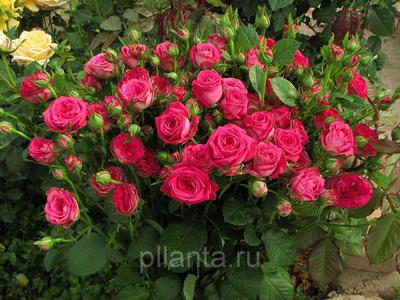

One cut off branch may well be considered an independent bouquet, which is why spray roses are often called "bouquet" roses. They are also great as a background for larger flowers, or in mini-bouquets, therefore florists use these flowers most often in wedding bouquets.
Like Floribundas, spray roses bloom very long and profusely. With proper pruning, flowering lasts almost all summer. In addition to being highly decorative, they are very unpretentious to conditions and winter-hardy, which allows them to be grown in the climate of the middle zone and even in cooler regions.
Another nice feature of roses is the small number, and sometimes the complete absence of thorns, which makes them easy to care for and make bouquets. In recent years, spray roses have been increasingly used in landscaping and home gardening. They are equally beautiful both in a flowerbed and in a single planting, and the small size of the plants allows them to be grown in pots and containers.
Spray roses are a group of subspecies similar to floribunda. Their distinctive feature is the short stature of the shrubs. They reach up to about 60 centimeters. The flowers are tiny, beautiful, from 3 to 7 cm in diameter. There are 10-15 buds on one branch. They bloom evenly, one shoot is a full-fledged bouquet. In floristry, flowers are used not only to create wedding bunches, but also as a background for larger crops in complex compositions.
Nuances of care
From March to July, apply top dressing with a high content of nitrogenous substances. In summer and until autumn, add potassium and phosphorus.It is important to carry out feedings during budding and at the end of pollen. Loosen the soil around the shrub regularly. For the winter, cover the plant. In the heat, it is worth sprinkling the petals with water, but towards evening, when the sun goes down.
Water miniature roses Spray in the same way as other Rosaceae varieties. Pour water under the root so that it does not fall on the leaves. Begin irrigation when the ground dries out from the previous irrigation. One bush will need 8 liters of water.
Top dressing
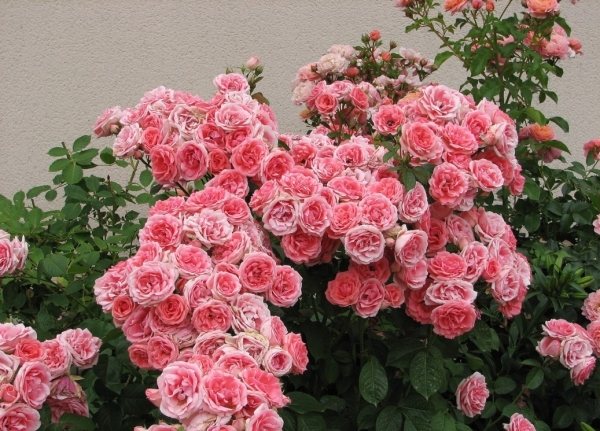

It is advisable to fertilize roses periodically. Feeding is especially required during budding and color. The procedure is carried out according to the general rules:
- during the appearance of buds;
- at the end of summer.
Roses love nitrogen fertilizers. By autumn, add potassium-phosphorus compositions. You can buy ready-made mixtures in the store, dilute them according to the instructions.
Wintering
Before frost, at about the beginning of October, cut rose bushes to a height of 30-40 cm. Remove leaves, buds, flowers from them with soil up to 30 cm up. Needles are placed on top, covered with burlap. If the roses are covered with snow, don't worry. This will serve as an additional cover, give them moisture.
It is necessary to prune shrubs in order to activate the formation of young shoots, long flowering. Prune 2-3 times during the growing season. Eliminate damaged and dry branches in parallel. At the end of flowering, remove the wilted flowers. Shorten the bush in June so that the rose does not expend energy on the formation of fruits, the bloom is more intense. Pruning will serve as an excellent prevention of fungal infections.
How the patio rose blooms
The blooming of roses is always an event. Dwarf roses have their own characteristics during this period.
Rose Patio is distinguished by long-term profuse flowering - sometimes until frost. During flowering, flowers appear both singly and in inflorescences.
For roses, a dormant period is important for the plant to rest and recover. At this time, the leaves begin to turn yellow and growth slows down. If the plant is in a pot, it should be placed in a cooler place.
Important! When kept in a heated apartment on a windowsill, a rest period cannot be arranged. The only exit is a glazed balcony. And so that the soil does not freeze, the pots are placed in boxes with sawdust.
Patio rose buds are similar to the flowers of the hybrid tea rose, which in this chain is considered the mother plant.
There are three types of flowers:
- simple;
- terry;
- semi-double.
Important! In some species, the flowers become flat towards the end of flowering.
The flowers are lush, the maximum diameter is 9 cm, they have a pleasant aroma.
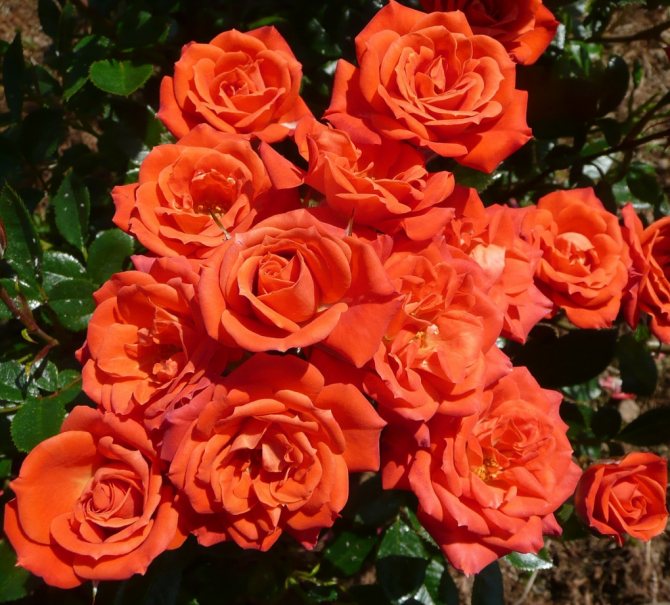

Blooming roses on the site
"Summer"
"Summer" - a small flower. Their height ranges from 60 to 70 centimeters. The width of the bush is about 60 centimeters. Leaves are dark green in color. Three to five flowers grow on the stem. The petals are yellow. The flower is 6 to 8 centimeters in size. The plant actually does not suffer from diseases such as powdery mildew and black spot. The flowers do not deteriorate under the influence of rain. The plant belongs to the frost-resistant type of roses. The aroma of "Summer" is very pleasant, with hints of fruit.
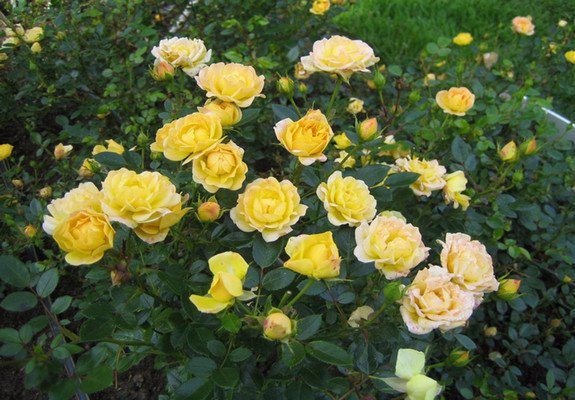

Did you know? The word "hat" is of ancient Roman origin. "Chapo", "chapel" in translation means "pink wreath".
How to choose the right seedlings
Rose planting material can be sold in mini containers or in bags filled with nutrient substrate, less often open. When planting in the fall, it is better to choose seedlings with an open root system, but plants in containers are better suited for planting in the spring.
Loading ...
Before buying, carefully inspect the bush and its root system for damage and other defects such as mold and dried out areas. In the case of purchasing plants in a package, pay special attention to the condition of the soil, it must be crumbly, not have a specific smell.A strong, healthy seedling with white roots at the bottom is the best choice.
The successful alignment of the scion with the stock is indicated by an even callus at the grafting site.
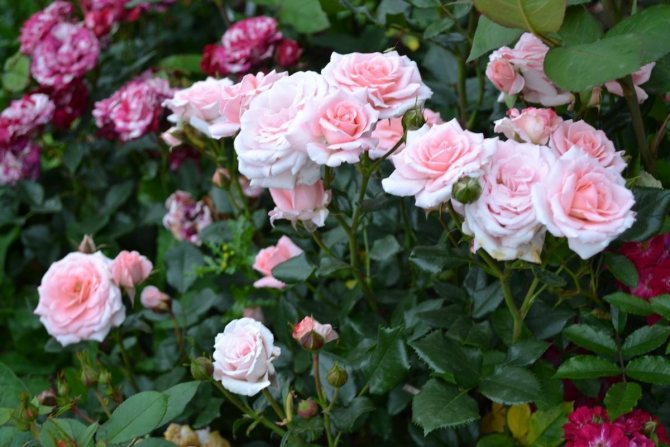

Preparing seedlings for planting
Before planting, the stems of rose seedlings must be pruned. Together with this, buds, damaged and dried branches are removed. On the main shoots of the bush, 4 ... 5 eyes are left. less developed stems should contain at least 3 buds. It is also necessary to lightly trim the lateral roots and remove the damaged ones.
For disinfection and speedy healing, gently coat all cut sites with garden varnish.
After carrying out these operations, plants with open roots are placed for 12 hours in a solution of water and sodium humate. To prevent drying, the roots of the seedlings are dipped in a mash, which is made of clay, water and a root formation stimulator, the components are mixed until a creamy consistency. After that, the root system is carefully wrapped in moistened burlap.
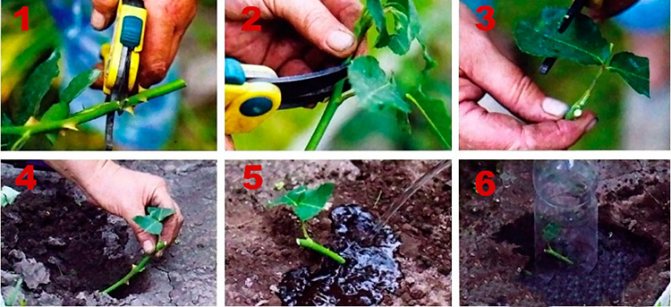

Preparation of soil and planting material
Many growers prefer the miniature patio rose more because this plant is unpretentious, and it also takes root well, despite the conditions. The crop can be planted and grown in special containers, in pots on windowsills, or outdoors. Before proceeding with planting, high-quality preparatory work must be carried out. So, preparation consists of two key points, namely:
- selection of a suitable variety and seedlings of the Patio rose.
- selection of a site for planting.
Note! You need to buy planting material in a garden center or a specialized store. In the process of choosing seedlings, you need to carefully check them for the presence of various lesions in the form of spots and black dots. It is necessary to give preference to one or another seedling only if its foliage is elastic and shiny.
After the planting material has been purchased, the seedlings need to be rinsed under warm water to eliminate possible bacteria and germs. If planting at home is planned, then it is recommended to transfer the seedlings by the transshipment method to a large container, and then send them to the greenhouse until the optimal time for planting comes.
"Rumba"
The rose was bred in 1958 in Denmark. It belongs to the Florinbunda species. Plant height ranges from 40 to 60 centimeters. The branches of the bush are spreading. The plant has dark green matte leaves. Abundant flowering. The flowers are medium-sized, yellow-red in color. If the planting is cut off, re-flowering can be achieved. "Rumba" has a mild aroma. It is used in group and single landings. This rose serves as a decoration for the rosary.


Rose transplant
When purchasing a patio rose, first of all, you should think about transplanting it. The fact is that in stores, even specialized ones, such a flower is often kept in poor conditions: a poor-quality pot, depleted soil, etc. Therefore, as soon as the rose finishes flowering or at least slightly gets used to new living conditions, it should be transplanted.
You need to choose a pot for transplanting a little larger than the store one. Before transplanting, it should be thoroughly washed and disinfected to avoid contamination of the plant. There should be drain holes at the bottom of the pot. Expanded clay is poured into the pot, 2-3 cm of soil should be poured on top. It is advisable to purchase a special land for a patio rose. If the soil is made by the owner independently, then a mixture of peat, sand and turf is well suited.
Then the patio rose is carefully removed from its pot, and, trying not to destroy the earthen ball, is lowered into a new pot. The voids are carefully filled with harvested soil. The land must be watered abundantly with settled water.
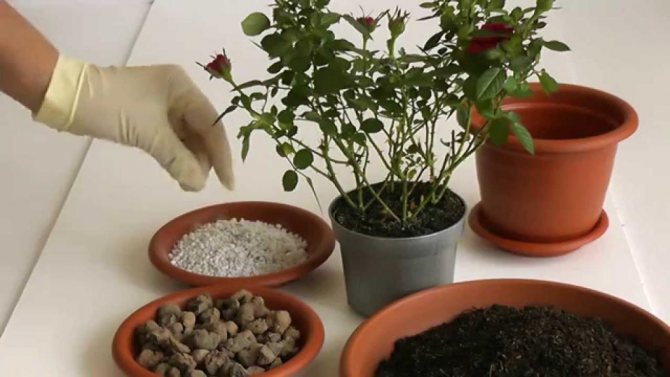

If everything is done correctly and the rose was not initially ill with anything, then soon after transplantation it will take root and begin to develop well.
In the future, it is advisable to transplant the rose every year, at least in the first few years. Transplant conditions remain the same.
Description and characteristics of roses Patio Hit mix
Rose Poetry
Rose Patio Hit Mix is a relatively new crop variety that combines many of the traits and features of other varieties of these royal flowers, which have been popular for several decades. The list of distinctive features of the Patio Hit mix variety includes the following:
- in height, shoots, in most cases, reach 45-55 cm, which slightly exceeds the maximum height of other decorative varieties;
- compact and small shrubs are formed with hard and dense shoots, which have very good weaving and branching;
- shoots are distinguished by the presence of beautiful dark green foliage, which gives a lush shape to the entire shrub;
On a note! Rose Patio begins to bloom in the second half of spring or with the onset of summer, flowering lasts until the onset of autumn.
[/ alert]
- the flowers have a very lush and beautiful shape, and their maximum diameter is 10 cm, the buds can be either single or collected in lush inflorescences;
- Patio Hit mix rose flowers are of three types - semi-double, simple and double.
During one season, the culture blooms several times. Indoor rose Patio Hit mix can be grown even outdoors, and caring for this plant is practically no different from other varieties.
Reviews and opinions of gardeners
In Russia, the most popular varieties are called Lydia, Ruby Star, Mimi Eden, Fire Flush... Reviews about them are left on the forums more actively than about others. Moreover, these opinions are mostly positive - these varieties deserve them.
Most often, the issue of wintering is discussed. In central Russia, it is advisable to cover the culture for the winter, despite the rather high winter hardiness of all varietal species. It is recommended to cover with spruce branches or needles.
In general, no additional plant care measures are required. The exception is cropping. It stimulates flowering that lasts throughout the season. When pruning at the end of flowering, leave about 15 cm from the soil surface.
It is advisable to purchase grafted bushes in proven stores and nurseries, and plant in the fall, around mid-September.
Pest and disease control
Aphid
The main pest of roses is aphid spray. These small insects settle in colonies on the inside of the crop leaves. The parasites suck the sap from the plants, which leads to wilting and twisting of the leaf plates. Aphids multiply intensively, giving up to 10 generations per year.
The presence of aphids on plants can be unmistakably identified by damaged leaves or chaotically moving ants (they feed on parasite sap).
To effectively combat the pest, a soap solution with the addition of mustard powder or chemical preparations Karbofos, Aktelik, Rogor is used.


Cicadca
Another dangerous rosary pest is the leafhopper. After parasitizing this insect, the leaves of the flower become covered with white spots, losing their original appearance. With severe damage, yellow spots appear on the surface. To combat the parasite, chemicals and insecticides are used.
A pale yellow or white leafhopper with an elongated body does not pose a danger to the plant. The main harm is caused by insect larvae, which feed on plant juices.
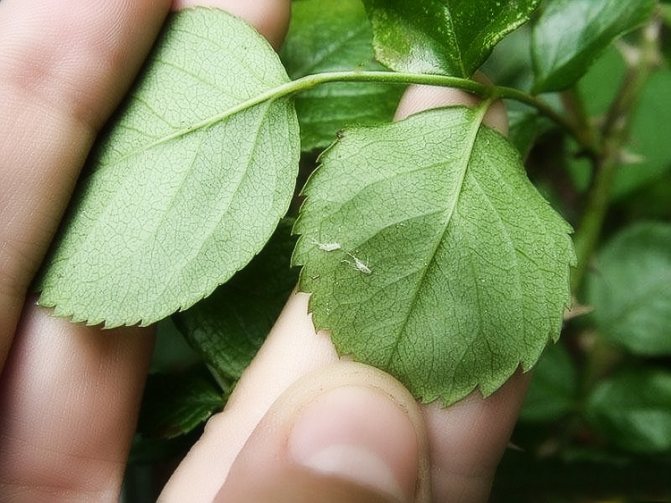

Spider mite
The spider mite is especially harmful to the culture. Its oval body, up to 0.5 millimeters long, consists of 4 pairs of legs. The color of the body is red or orange, the larvae are greenish.Parasites damage the lower surface of the leaves of roses, suck out juices, which leads to the appearance of yellow spots and a loss of decorativeness of the plant.
You can detect the pest with a magnifying glass or on the thin cobwebs that bind the leaves.
Tick colonies can be destroyed with chemicals such as Vermithek or Fitoverm.
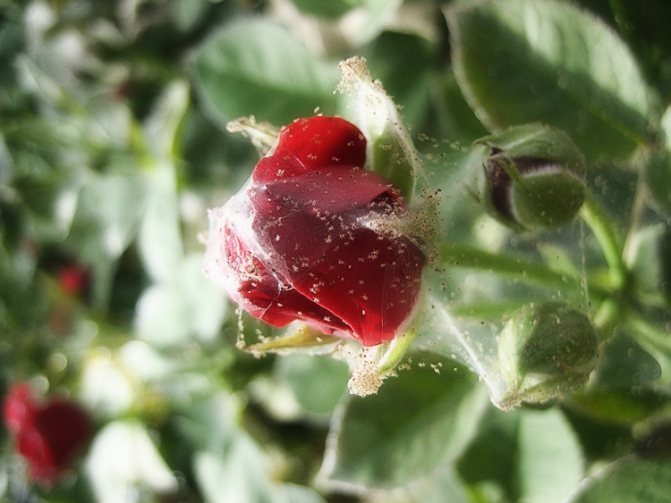

Leaf roll
Of the pests of the rose, special attention should be paid to the leaflet. Caterpillars appear on the plant in early spring, begin to gnaw the buds and young shoots, then take up the leaves. Caterpillars are harvested by hand and destroyed, with strong foci of damage, the plant is treated with insecticides.
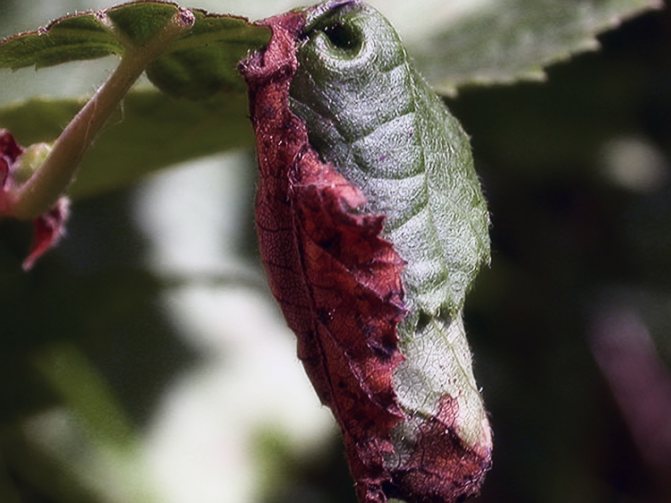

Powdery mildew
Powdery mildew is considered the most popular among rose diseases. The disease manifests itself in the form of a powdery white coating on the leaves and shoots of the culture.
Moderate temperature and high humidity can be the cause of its occurrence.
Powdery mildew is prevented by spraying plants with a Bordeaux mixture and applying phosphorus-potassium fertilizers. At an intensive rate of development of the disease, roses are sprayed with a solution of soda ash 0.5% concentration.
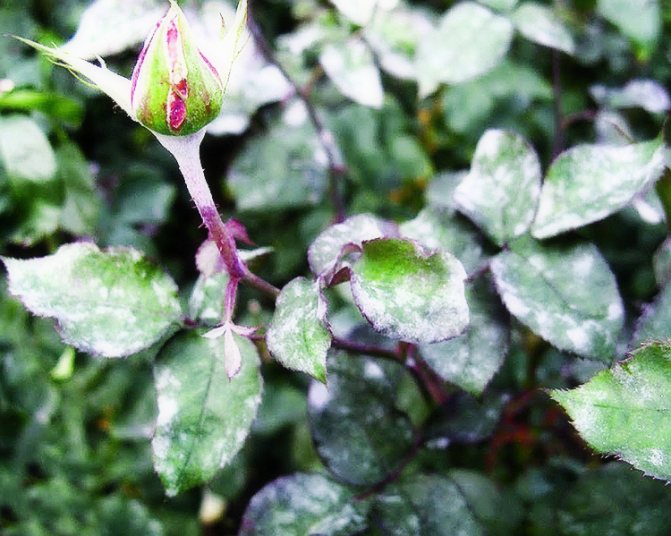

Black spot
This is a fungal disease that appears on the leaf blades of the rose in the form of brown spots from the middle of summer. Severe damage leads to complete blackening, drying out and leaf fall. Fungal spores hibernate in fallen leaves and shoots, which is why organic remains must be removed from the site and burned.
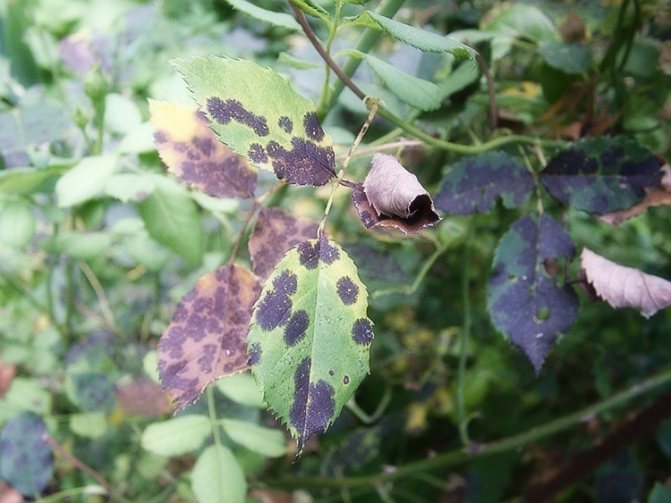

Another effective solution to the problem is the spring treatment of rose leaves with Bordeaux liquid.
Even a novice gardener can handle growing roses with spray. The main thing in this matter is to follow the rules of planting and caring for plants, to carry out timely processing of flowers from diseases and pests.
What is a rose mix
Mix roses are not subdivided for sale by varieties, so they are called that. Modern cloning technologies allow them to be grown on an industrial scale, although they are taken from certain varieties, the belonging to which is clearly visible.
Seedlings obtained by these methods may not replicate some of the properties of the variety obtained by breeders and cut by the conventional method.
It is problematic to purchase real varietal miniature roses from us and they are not cheap. But this is for connoisseurs, and for a summer residence or at home, thanks to modern methods, we have the opportunity to grow magnificent roses at home.
In a pot, as a rule, there are 3-4 own-rooted seedlings.
Care and fertilization rules
The home rose is in an artificial environment, so it needs careful care. To keep the bush always healthy and bloom luxuriantly, place the plant pot in a well-lit place where the light is bright, but diffused. For the even development of the crown, it is very important that the bush is illuminated from all sides. This condition is met if the plant is turned every week, or illuminated with lamps. Cold and drafts are harmful to the rose. Better to have a temperature of 18-23 ° C. Air humidity should be moderate (too dry air contributes to the appearance of a spider mite on a rose, humid air leads to the development of fungal diseases). Water the flower with settled water. The frequency of watering depends on the season. In summer, you may need 2 waterings a day, in winter, 2 times a week is enough. Top dressing is the key to growing a home rose. To make it bloom profusely, fertilizers are applied 1 time / 2 weeks. It is advisable to alternate mineral fertilizing with organic matter. Best of all, roses absorb liquid fertilizers, which are applied at the root. For spraying the leaves, special fertilizers are used. If the plant is sick, it is not recommended to feed it.
Plant wintering methods
Some people dig up the plant in winter to plant in their apartment. This way of getting through the winter works, but there is a risk of damaging the flower's root system.In winter, greenhouses can be installed to protect the shrubbery from snow. To do this, a wire frame is formed around it, covered with a film that forms a greenhouse. The greenhouse should be several centimeters higher than the bush. The plant needs to be ventilated when the frosts subside - this allows the flower to be hardened before the final opening.
In winter, the rose lacks lighting. If the room temperature drops to 15 degrees, the plant falls asleep. Additional lighting can be provided with a lamp. In this case, the air temperature in the room should be approximately 20 degrees.
The plant falls into deep sleep if the air temperature drops to 5 degrees. In deep sleep, the rose loses its leaves, and it will no longer need additional lighting.
Preparing for winter
For normal wintering, it is necessary to make a hill of earth above the shoots of plants. Before hilling, remove non-lignified shoots, flowers and leaves. Experienced gardeners cut off all flowers and buds from roses in the last decade of October. This will help harden the plants and prevent the use of additional nutrients from the soil. Sand or dry soil is poured over the stems of roses to a height of 35 centimeters. Further, the hill is covered with sawdust, low-lying peat or spruce branches.
Do not take the soil from the rows of flowers, such actions can provoke damage to the root system of plants.
There is another method of covering roses for the winter, air-dry. It consists in the device of an impromptu frame made of metal wire up to 50 centimeters high. Further, this structure is furnished with foam rubber, foam sheets or reeds. Next, a plastic wrap is stretched onto the frame, which will protect the plant from moisture penetration. To prevent the destruction of the material, the hanging pieces of the film are sprinkled with earth. An improvised shelter can be ventilated before the onset of cold weather with negative temperatures below -15 degrees.
Reproduction
Spray roses can be propagated in several traditional ways:
- seeds;
- cuttings;
- dividing the bush;
- rooting.
When choosing a suitable method, you need to take into account that growing roses is not only a rather complicated process, but the result can be unpredictable. Since all garden roses are the result of the work of breeders, they do not reproduce well by seeds. Even if the seed sprouts, there is no guarantee that the rose will look the same as the mother plant. It can be a completely different flower, with different qualities, and of course, it is not a fact that it will be also attractive.
The easiest way is to divide the bush. Using this method, you get a ready-made, adult plant. However, it should be borne in mind that this is stress for the parent plant. It loses its immunity, it can get sick. Flowering may become scarce and growth stunted. It will also take a lot of time to root.
The most correct method is grafting. It guarantees the safety of the mother bush. You can also be sure that exactly the same plant will grow from the cuttings, with the same characteristics and external qualities. For grafting, a part is taken from the middle of the stem, 15 cm long. The stem is cut at an angle of 45 degrees and placed in a highly moistened soil, or in a solution that stimulates the formation of roots.
Rooting has the same effect. For rooting, one of the stems is bent to the ground, and sprinkled with earth in one place. When roots form in the ground, the new plant is pruned and planted in the right place.
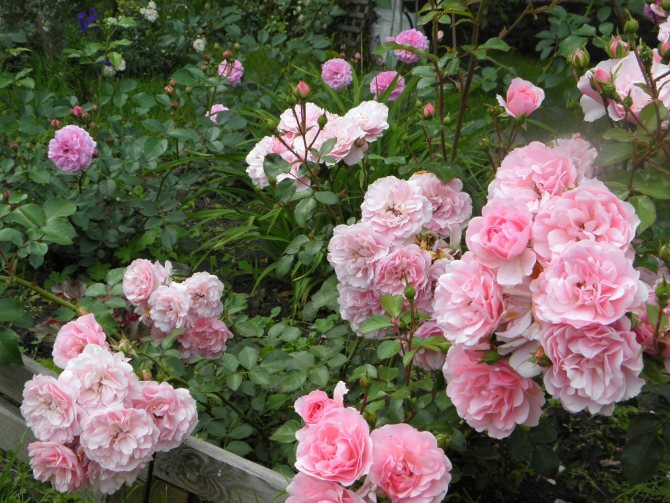

What kind of roses do we buy?
J. Tadeusz: “Most often, various varieties of miniature roses are sold as pot roses. These are Cordana roses, which are characterized by compact bushes and small flowers. Similar to them are Turbo roses, but with larger flowers, and Patio roses. Patio roses are a group of garden roses that are also successfully grown in the garden.They are characterized by larger bushes and the flower itself than those of miniature roses. "
Potted roses bought in a flower shop have the property of continuous flowering from May to October and a compact shape, growing up to 15-25 cm.The size of their flowers does not exceed 1.5-2 cm in diameter, have a variety of colors, doubleness and fullness of the bud, and often the aroma.
The age of such plants is only 2-3.5 months from rooting. As a rule, they are sold planted in 4 pieces in 10 cm pots or 3 pieces in 6 cm pots. They have not really grown stronger yet, but here it is such stress - the change from the comfortable conditions of professional greenhouses to the far from ideal conditions of our apartments.
Miniature Roses Rose Cordana Rose Patio
J. Tadeusz: “Before buying, carefully examine the bush, how long it will live with you largely depends on its condition. Only very experienced growers can pull out a completely weakened plant. First of all, inspect the shoots and leaves. Shoots should not have black spots, this may indicate the presence of a fungal disease. The leaves should be green, dense and shiny in appearance and adhere well to the shoots. White bloom on the leaves indicates a disease with powdery mildew, brown or black spots - about fungal rose spots. Yellow color and shedding of foliage means that the plant is depleted or has been overflowed. Be sure to check for pests. Indoor roses can be affected by the scabbard, mealybug and the scourge of indoor roses - the spider mite. "
Growing
Further care for roses with spray is simple. All that is required is to loosen the aisles in time and remove weeds, as well as water and fertilize, cut off shoots on lush bushes. Next, we will deal with all the activities in more detail.
Watering and feeding
Plants need regular abundant watering throughout the growing season, and especially during flowering in persistent drought. Laying mulch in the root zone of the plant will help to simplify the process. A thick layer of sawdust or low-lying peat will prevent moisture from evaporating.
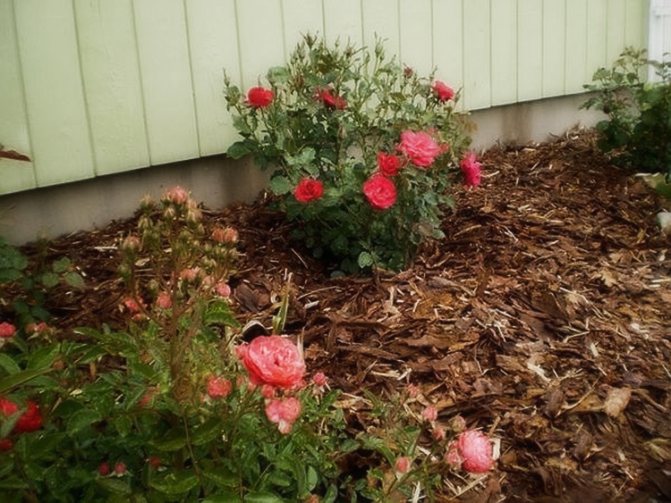

In the absence of a mulching layer, the soil must be constantly loosened and weeds removed. In hot weather, burns can appear on the leaves of roses. To prevent this phenomenon, the bushes are watered with warm water in the evening by sprinkling.
For long-term intensive flowering, spray roses must receive additional nutrients, which are introduced into the soil in the form of dressings.
At the initial stage of development, nitrogen is required before the first buds appear. Flowering shrubs take from the soil a significant amount of phosphorus and potash fertilizers, as well as trace elements.
Correctly cut and form a bush
Not only old, but also young bushes are formed. After pruning in the fall, strong lignified branches with buds should remain on the plant. Old and shrunken shoots, as well as wind-damaged shoots, are not left on the plants. When pruning roses, the following rules must be observed:
- use a previously disinfected sharp pruner or other tool for work;
- pruning is carried out from the bottom to the top of the bush;
- the sections are carried out over the external kidney at an angle of 45 degrees;
- if the plant can be damaged by diseases and pests, the wounds are covered with garden var.
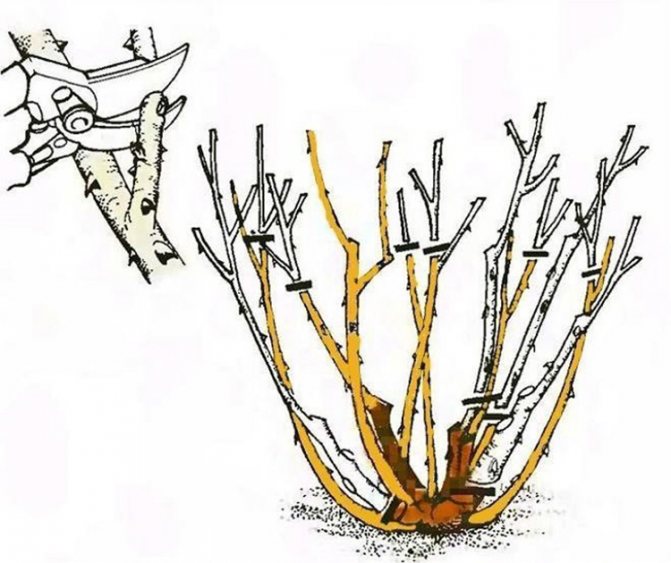

The technology for forming a bush depends on the variety of the crop. So short pruning is used for highly bushy plants. With an average formation, the bush is shortened by half the length, leaving 30 centimeter stems with 5 ... 6 buds. Long pruning involves removing 2/3 of the branch, helping to achieve early flowering.
Similar work is carried out in the fall in the evening in the presence of warm weather. During formation, the 5 most developed shoots are determined on the bush, the rest are removed at the root.
A healthy shoot does not have a large number of lateral branches, has a dark green bark, and has a diameter of at least 1 centimeter.
On the selected stems, five buds are counted from below and an even cut of wood is made. During work, make sure that the upper kidney remains on the outside. A distance of 1 centimeter recedes from it and an oblique cut is made towards the middle of the bush. After trimming the wound, the plants are covered with garden pitch and the branches are removed.
Preparing for winter
For normal wintering, it is necessary to make a hill of earth above the shoots of plants. Before hilling, remove non-lignified shoots, flowers and leaves. Experienced gardeners cut off all flowers and buds from roses in the last decade of October. This will help harden the plants and prevent the use of additional nutrients from the soil. Sand or dry soil is poured over the stems of roses to a height of 35 centimeters. Further, the hill is covered with sawdust, low-lying peat or spruce branches.
Do not take the soil from the rows of flowers, such actions can provoke damage to the root system of plants.
There is another method of covering roses for the winter, air-dry. It consists in the device of an impromptu frame made of metal wire up to 50 centimeters high. Further, this structure is furnished with foam rubber, foam sheets or reeds. Next, a plastic wrap is stretched onto the frame, which will protect the plant from moisture penetration. To prevent the destruction of the material, the hanging pieces of the film are sprinkled with earth. An improvised shelter can be ventilated before the onset of cold weather with negative temperatures below -15 degrees.
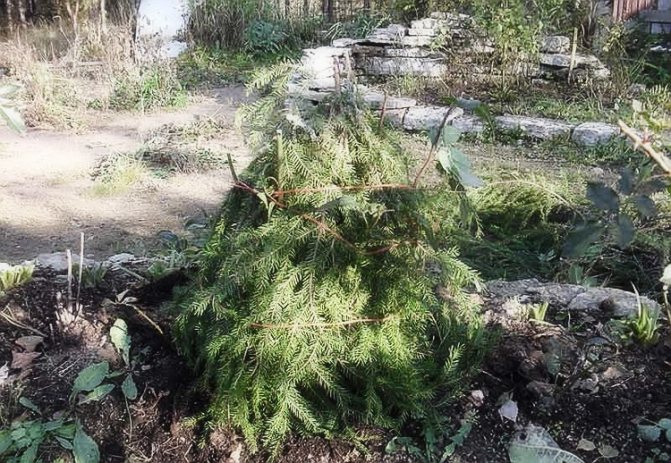

Where can one buy?
You can buy seedlings of these amazing crops in nurseries, gardening stores, buy seedlings of spray roses by mail or through the online store.
| Variety | Where can one buy | Price |
| Lovely Lydia | Roses of vyatka (nursery, online store) | 320 rubles |
| Pink flush | Rose growing economy "Kuban rose" | 200 rubles |
| Sasha | LLC "Wonderful Garden" | 350 rubles |
| Midget | Online store "Samara seeds" | 250 rubles |
| Rumba | Roses of vyatka (nursery, online store) | 320 rubles |
Good catalogs of plants can be viewed on the site of the Omsk nursery "Divny Garden", on the site "Bushes of Roses" in the Krasnodar Territory, and in the catalogs of Altai selection there are spray roses of various colors (pink, red, yellow, white and others).
What is this plant?
Botanical description
Rose mix belongs to the Rosaceae or Rosehip family... This variety was bred by breeders specifically for growing at home.
Features of the
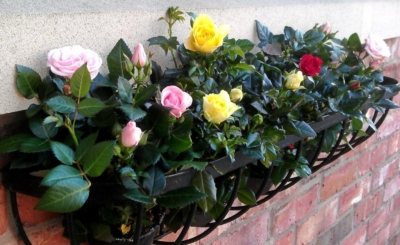

The plant is a small shrub up to 65 centimeters high. The size and color of the buds depends on the variety of the flower.
As a rule, this is a miniature rose, endowed with a delicate aroma. This rose variety can bloom several times a year. At the same time, the flowers on the plant retain their color and aroma for a long time.
Subsorts and their photos
Parade
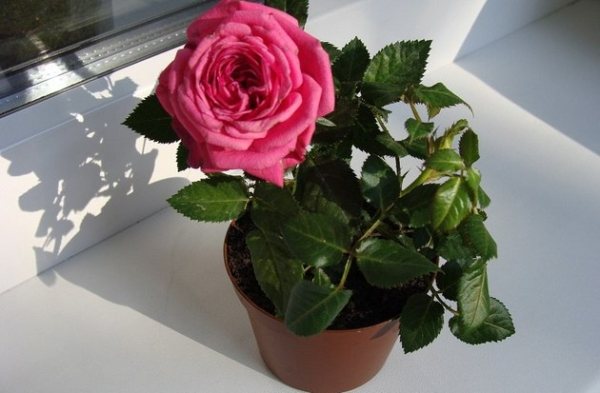

Low plant (40 - 45 cm). Pleases with lush flowering for 5 - 6 months. This is followed by a two-month break. Best adapted to the home environment.
Patio hit
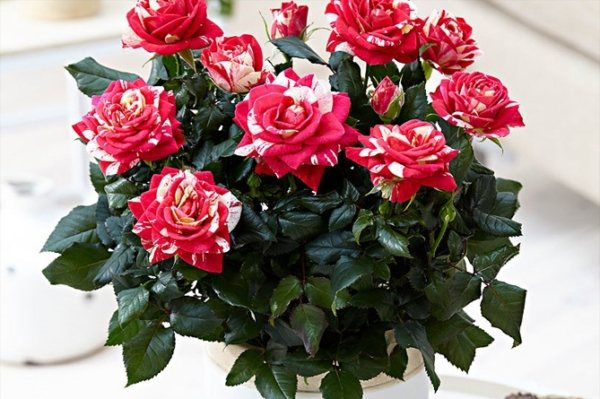

Rose belongs to the floribunda group... Stem length 50 - 55 cm. Large flowers can be of different shades, even with two-color petals. It blooms for a long time and abundantly.
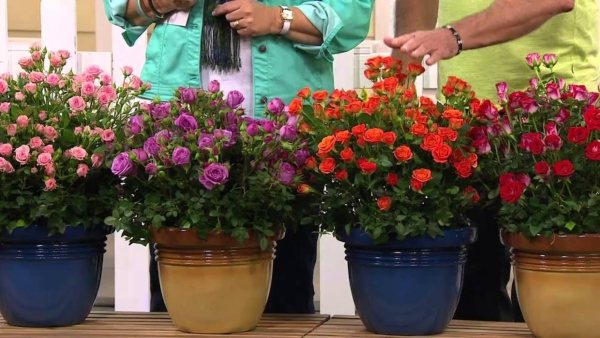

Dwarf plants (up to 40 cm). The buds can be both small and large.
Danica
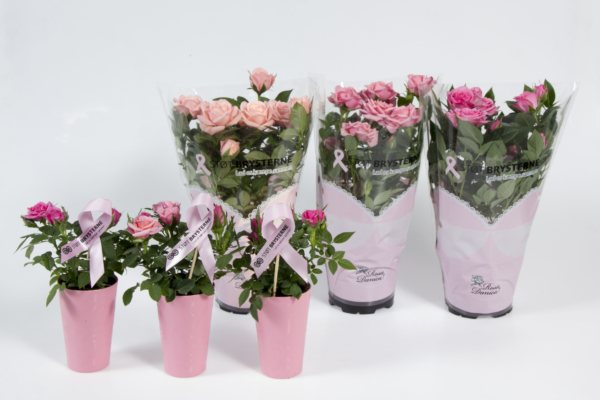

A small plant with a height of about 30 cm. The size of the petals in a bud is about 3 - 5 cm. Their color may vary.
Accommodation requirements
Patio rose prefers cool temperatures, does not tolerate heat and stuffiness. Therefore, in the summer it can be displayed on a balcony or veranda. This plant loves light, but it is categorically undesirable to allow direct sunlight to hit it. Leaves can get burned, start to turn yellow and crumble.
Drafts are no less dangerous for her.If the rose is kept on the window, then in cool and cold weather it is necessary to insulate the windows so that the plant does not freeze. The rose is best placed on the southwest or southeast window.
In the months when the daylight hours are short, a fluorescent lamp can be used to provide the desired level of illumination.
How can you multiply
In practice, several spray rose propagation methods are used:
- Using seed. A time consuming method that involves the collection and stratification of grains, growing seedlings.
- Rooting of roses by layering is carried out in the spring. With this method of reproduction, one of the lashes is bent from the mother bush and covered with earth. By the fall, this shoot will have its own roots, after which it can be transplanted to a new place, as a separate plant.
- With the help of root suckers. Such plants are separated from the mother bush one year after emergence, when they have their own root system.
- By cuttings. In the middle part of the shoot, several pieces of the stem are cut and placed in a solution of water and a growth stimulator. In the future, the plant is rooted in a special greenhouse, a school under a certain temperature and humidity regime.
- In the case of dividing the bush, the rose is cut into pieces. Moreover, each plot must have its own root system and 2 ... 3 developed buds.
The fastest way to reproduce is to divide the bush. In this case, spray roses retain varietal characteristics. The use of seed is practiced by breeders to obtain new types of crops.
Photo
Propagation of a rose
For propagation of this plant, cuttings are excellent. This method is not only simple enough, but also useful: pruning a rose is an important component of its beauty and health.
To do this, several shoots are cut off from the plant. Places of cut can be previously dipped in "Kornevin" or any other stimulator of root growth. Shoots are placed in water. After a while, roots will appear on them. When they grow enough and get stronger, you can plant the cuttings in the ground.
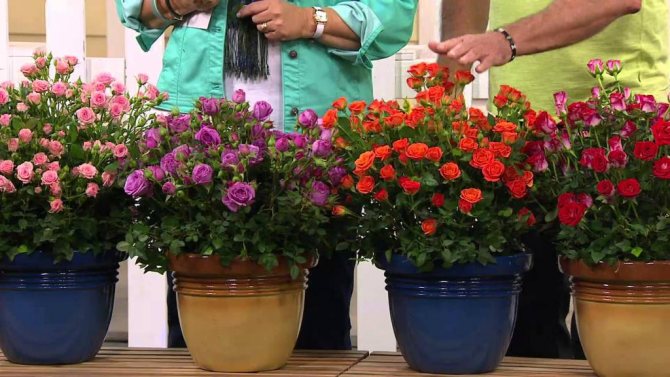

Basic information
The spray group emerged from the separation from the floribunda group of roses. The new species is represented by compact low bushes. Their average height is approximately 50 cm, although sometimes they can grow up to 90 cm. About 15 buds can bloom on one branch.
The flowers themselves can be large, medium, and small, creating the impression of "splashing" on the bush. The diameter of the spray rose flowers is from 4 to 7 cm. One bush has a large number of flowers, which is why this plant is called "pink spray". These are decorative and very exquisite plants, they are used to decorate personal plots, and are also used to form bouquets, in particular, weddings, so these flowers are often called "wedding".
Spray roses combine the best qualities of flowers:
- abundant and long flowering;
- unpretentiousness to the conditions of detention;
- endurance in Russian climatic conditions.
They can be grown in Russia due to their excellent frost resistance. There are not so many thorns on its stems, and sometimes they are completely absent. If this plant is properly cut, then you can get continuous or just a very long flowering: with the arrival of heat and before the onset of the first cold weather.



